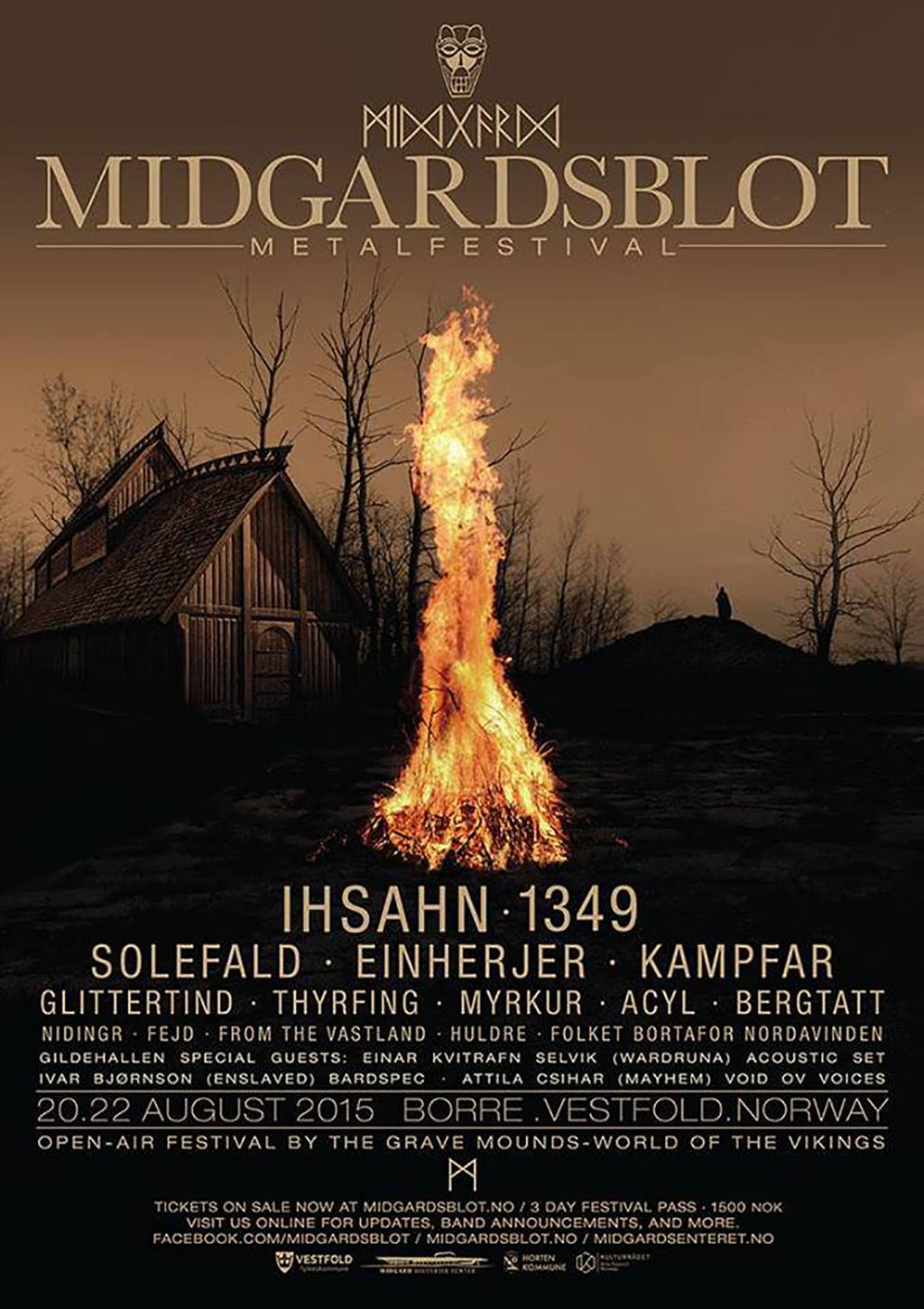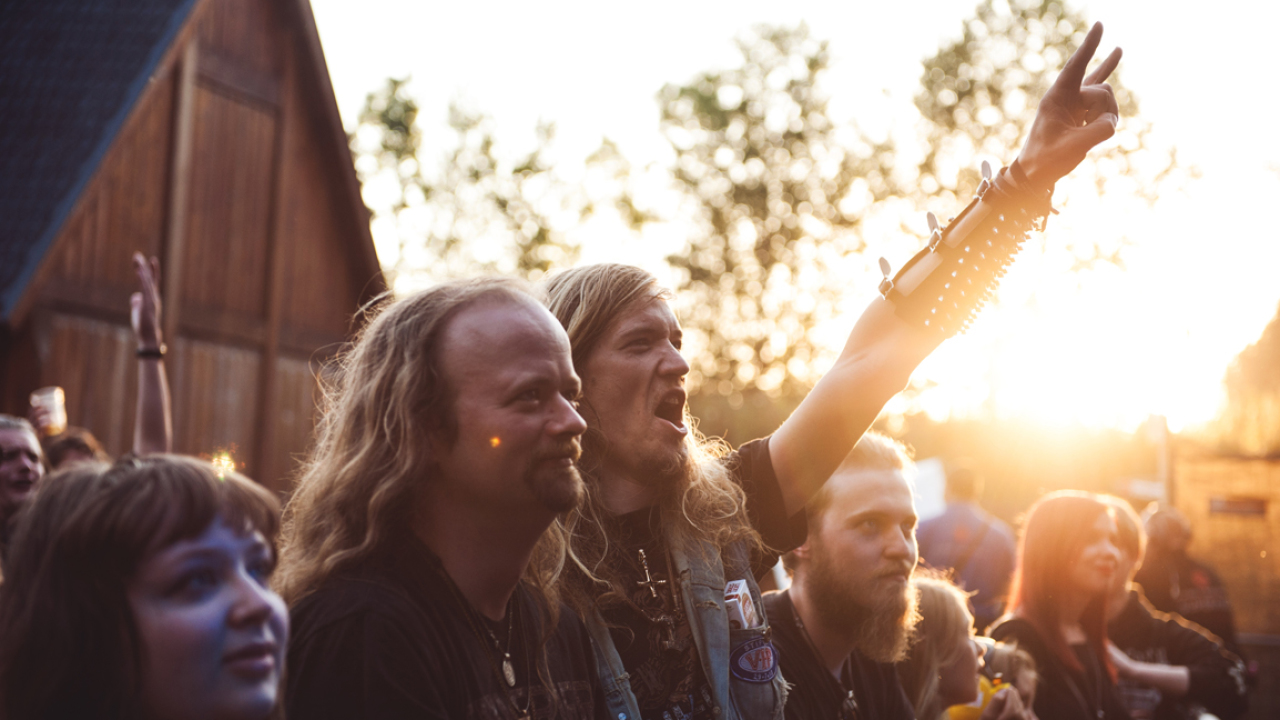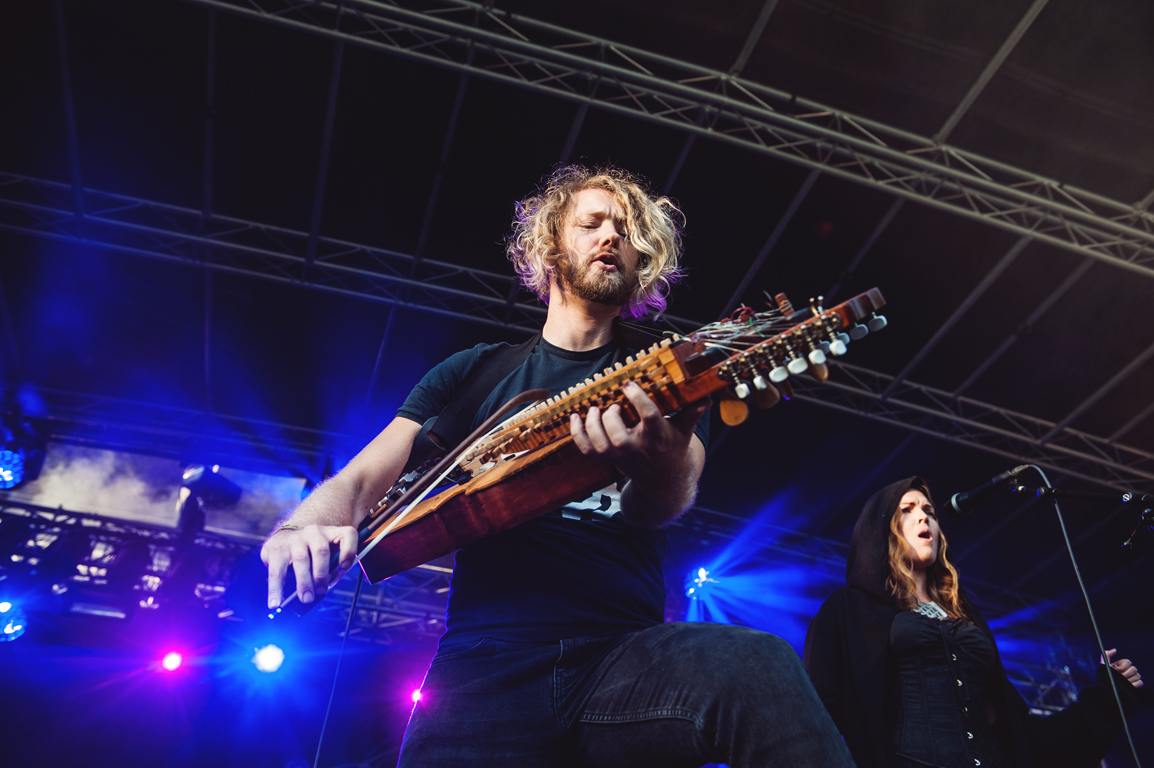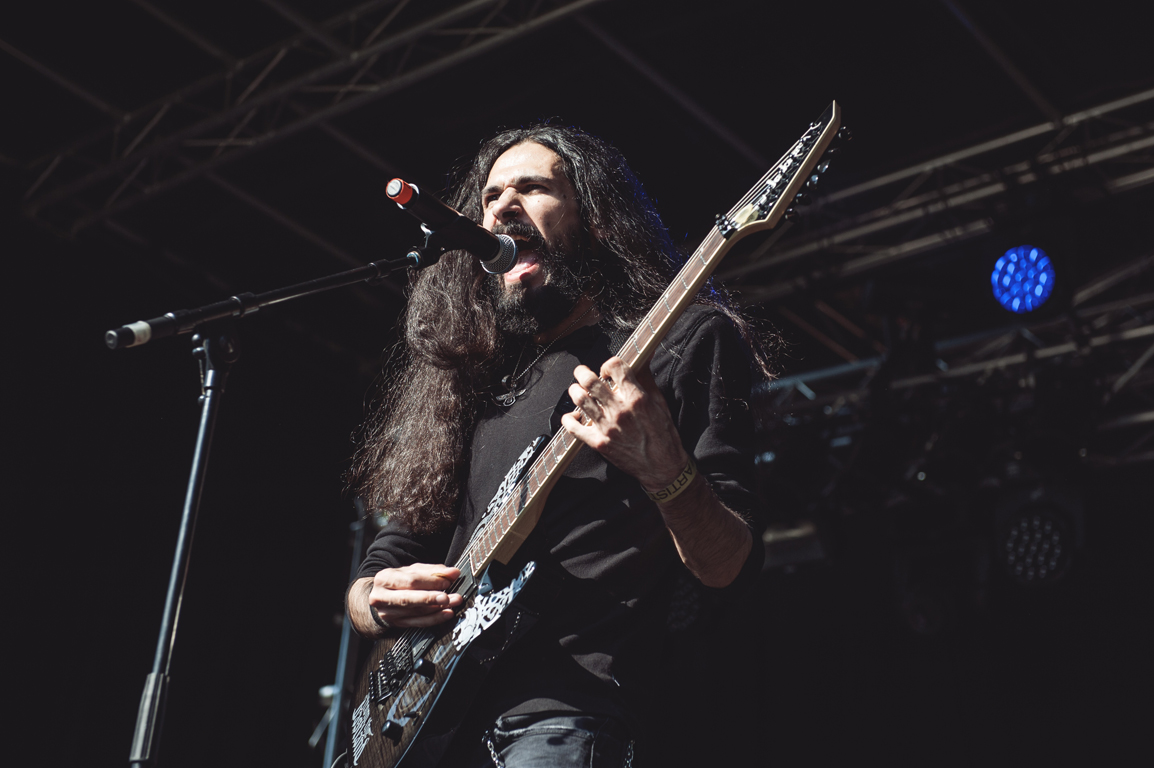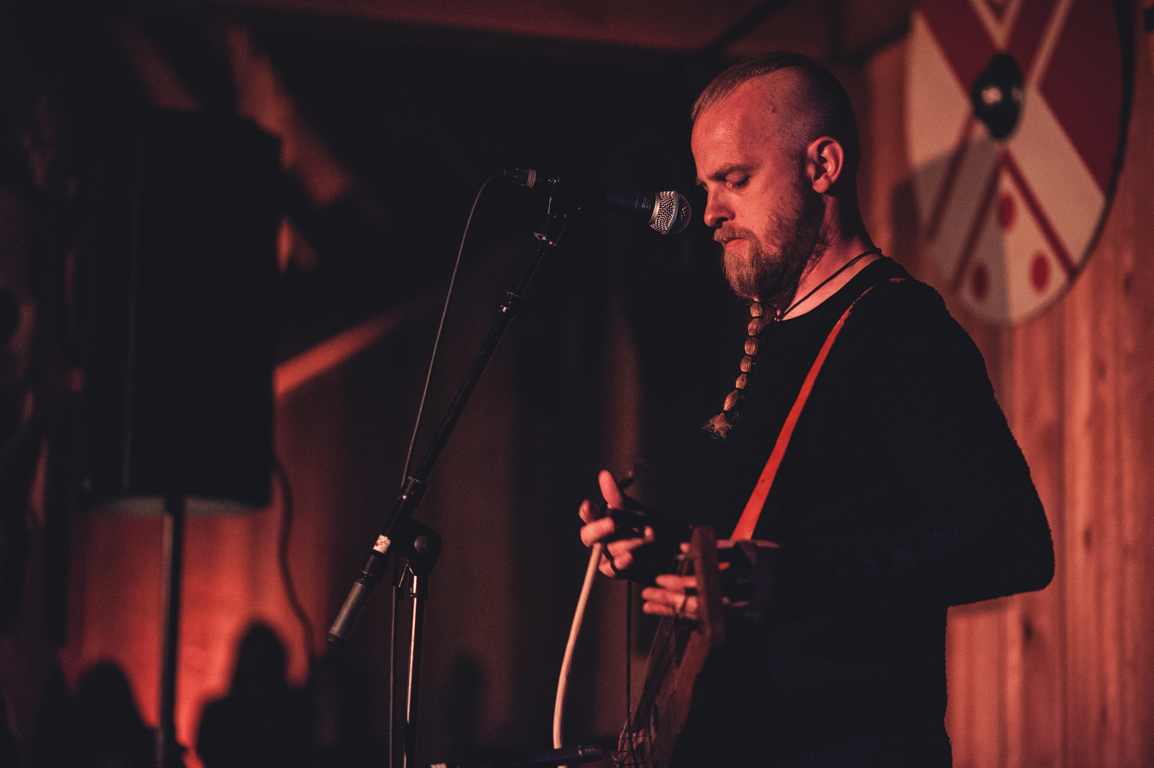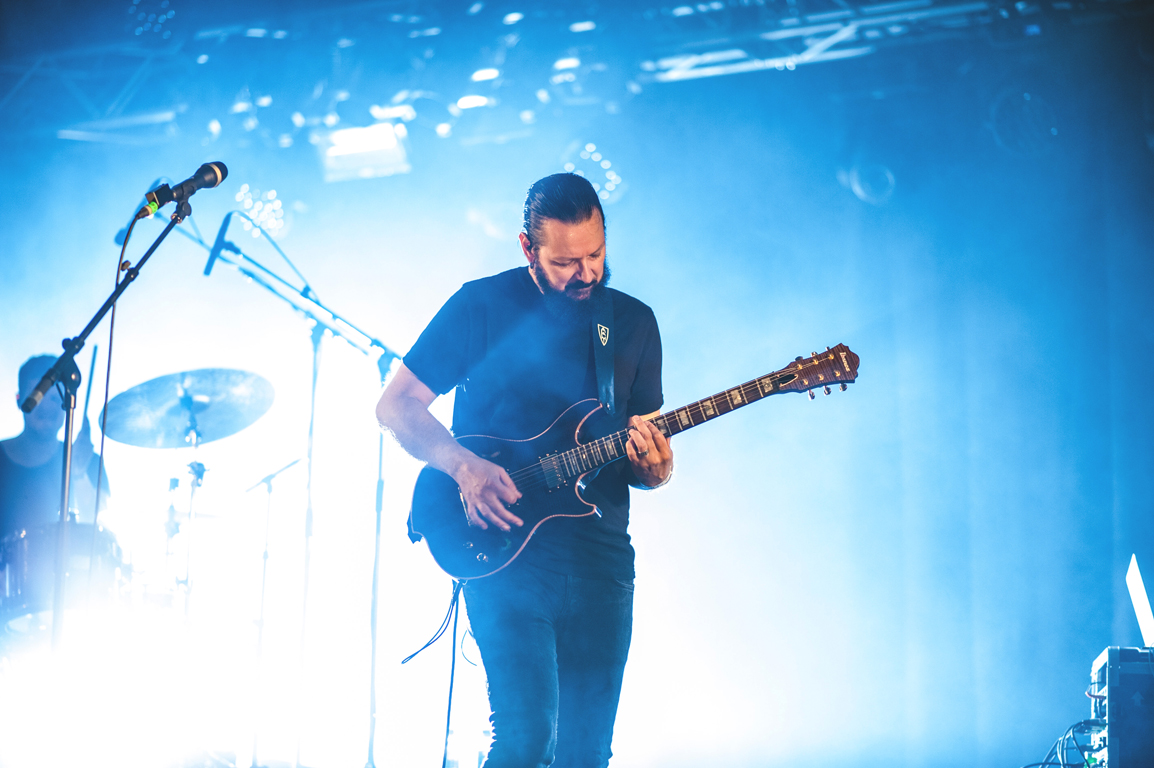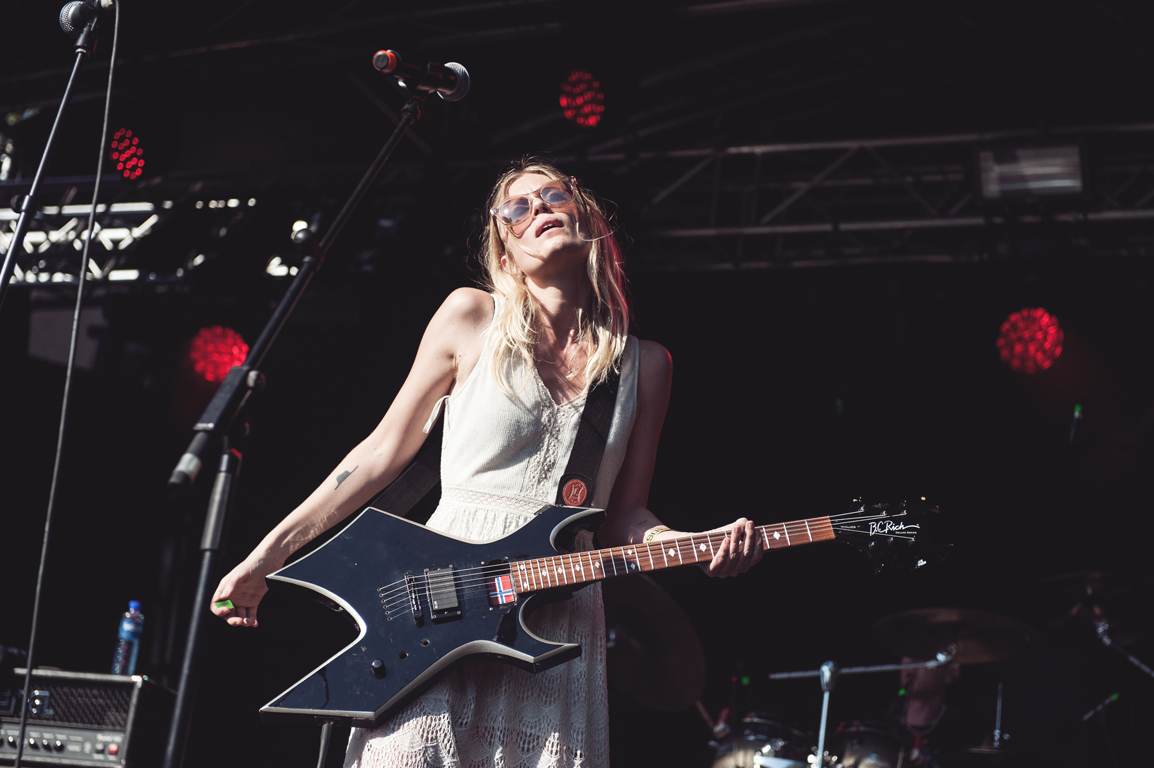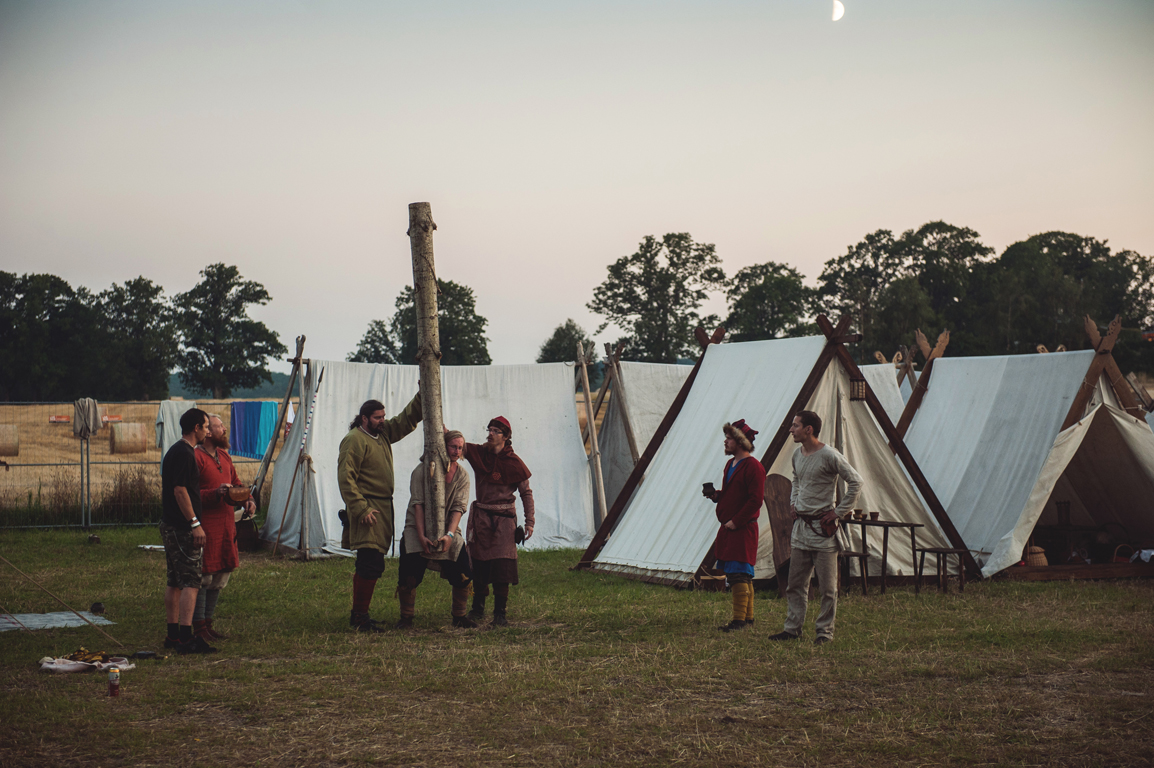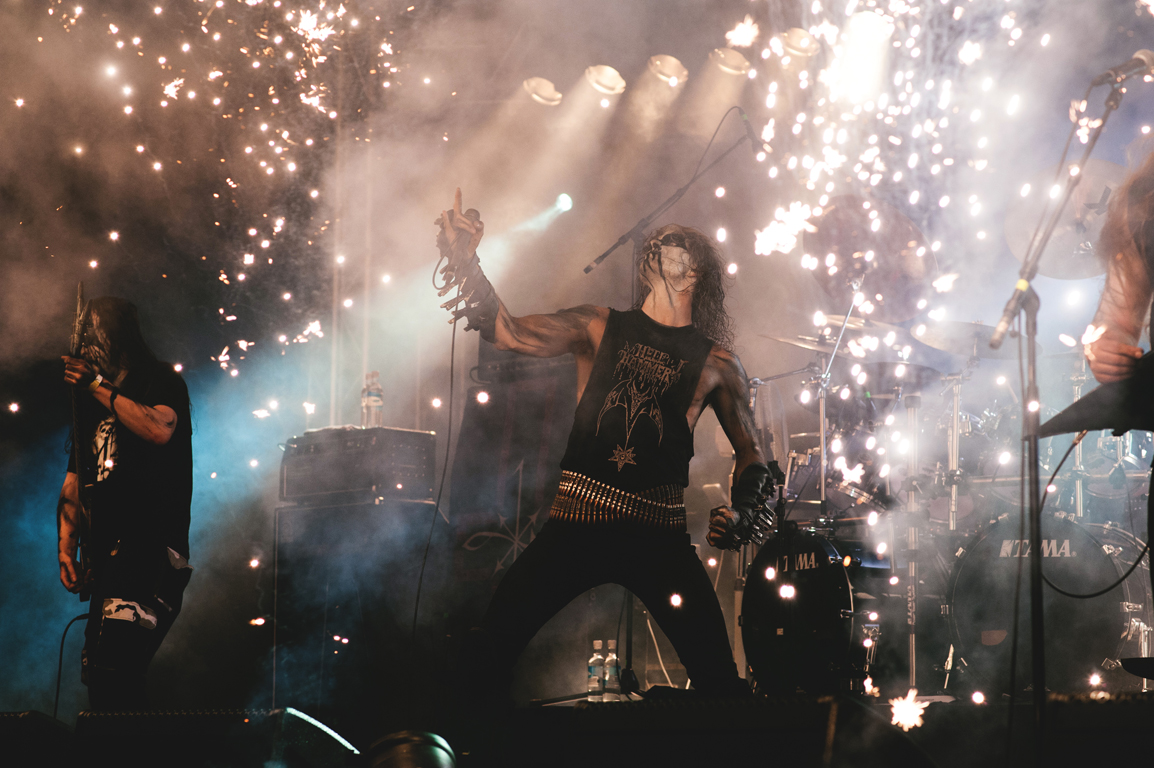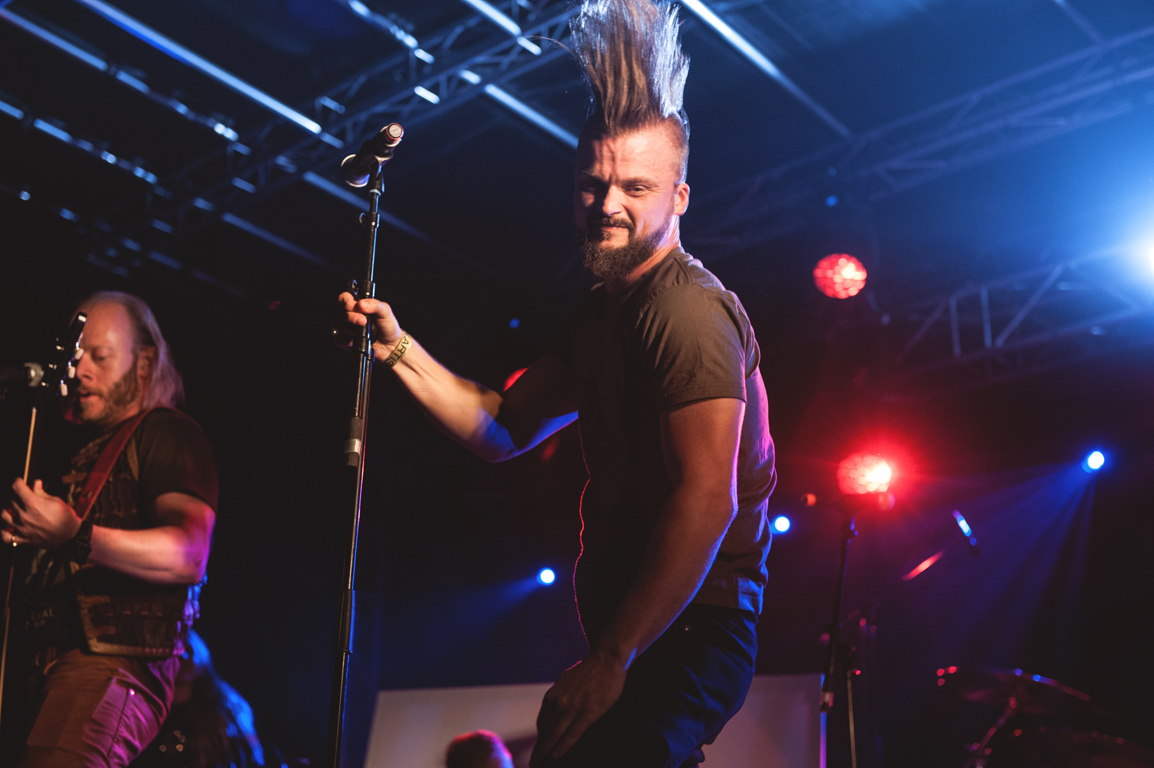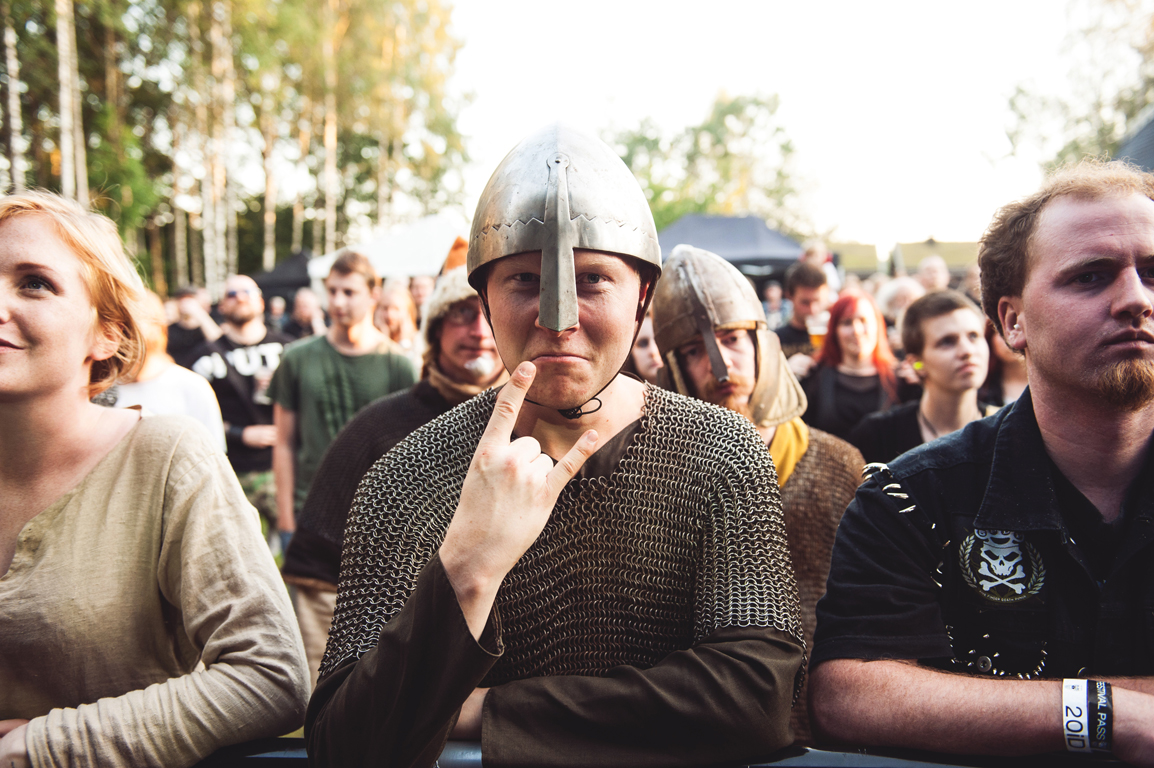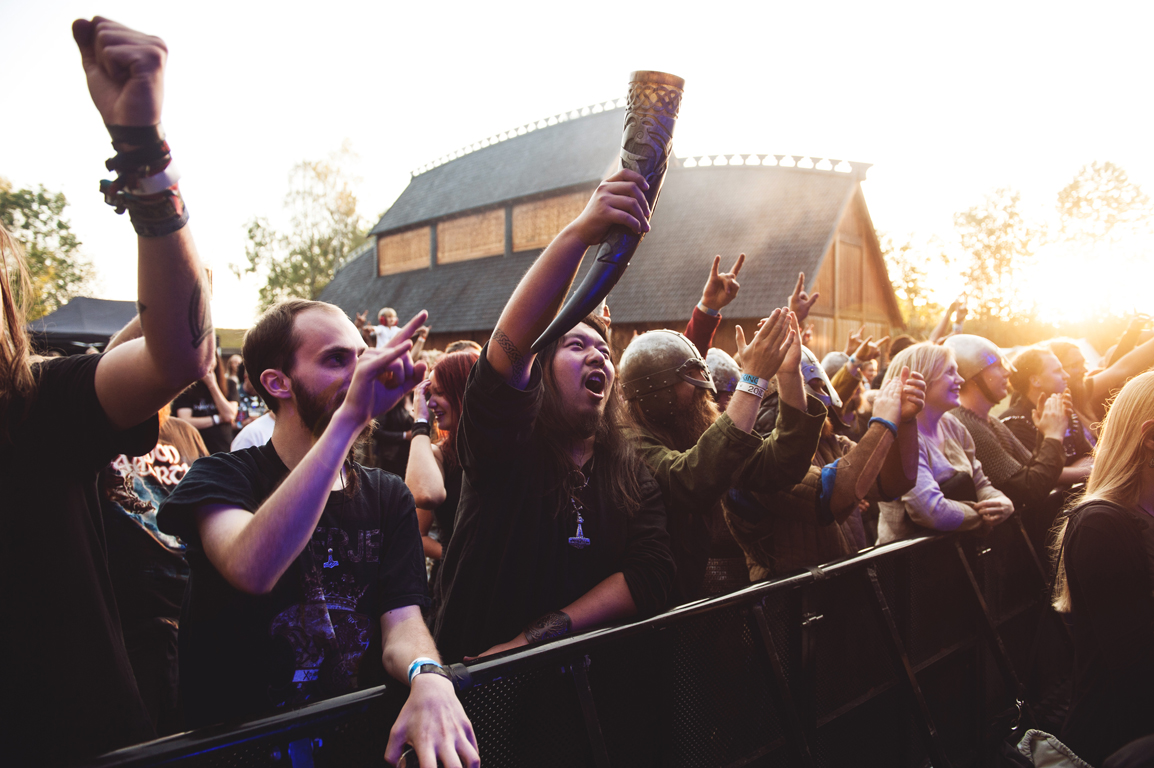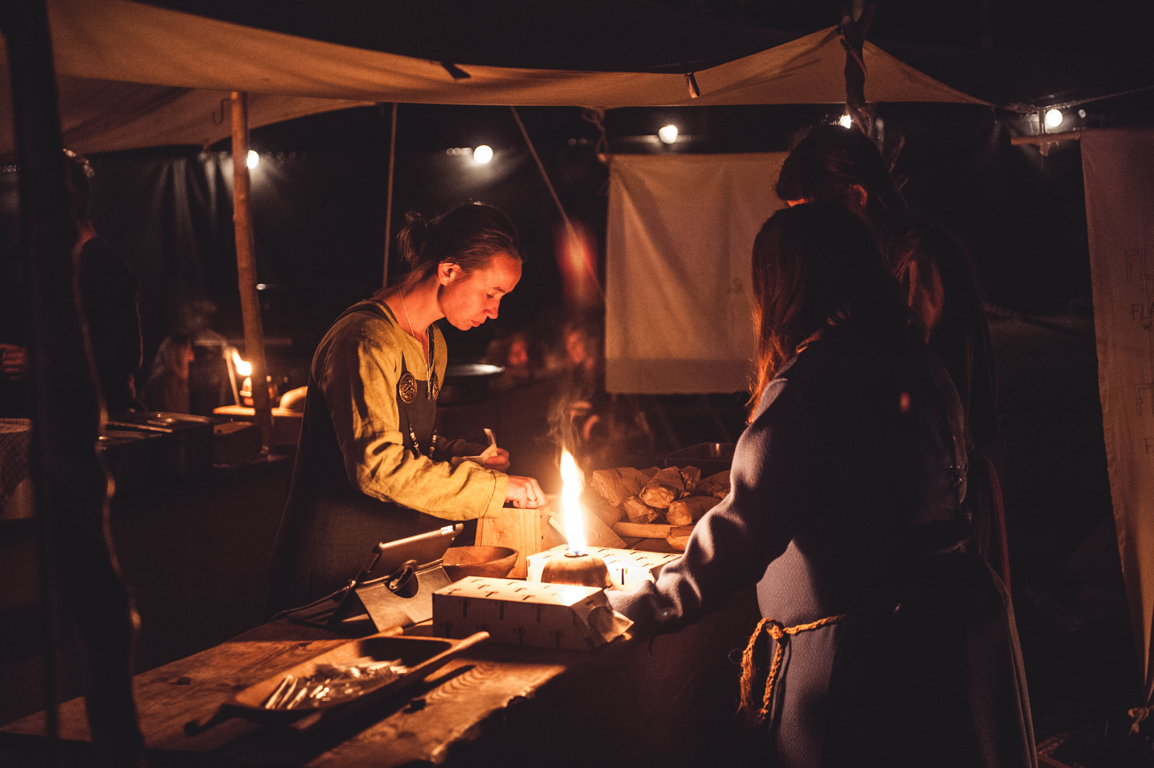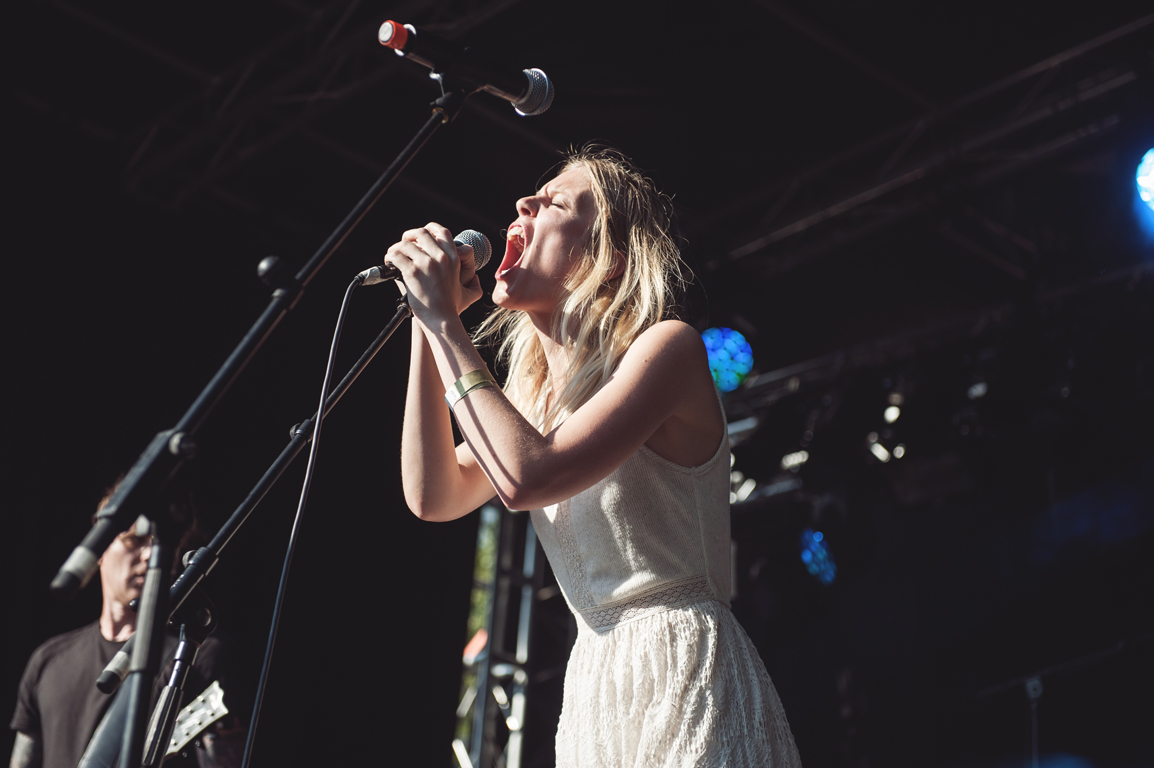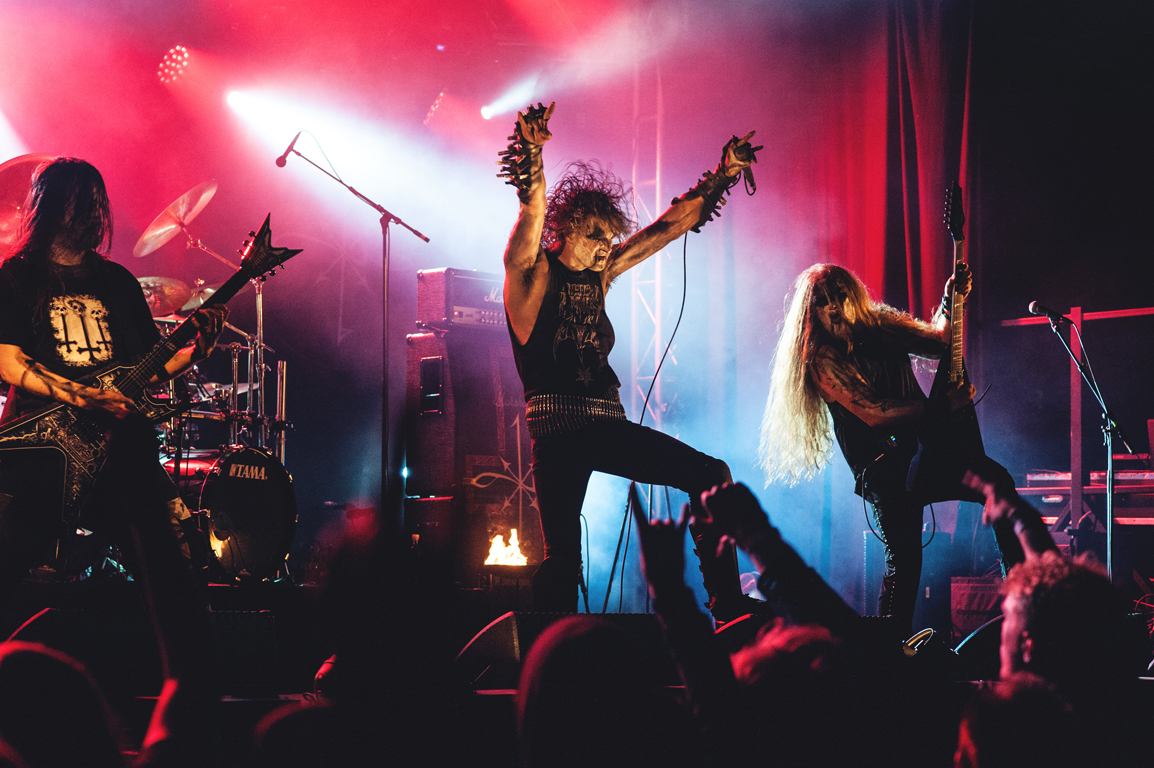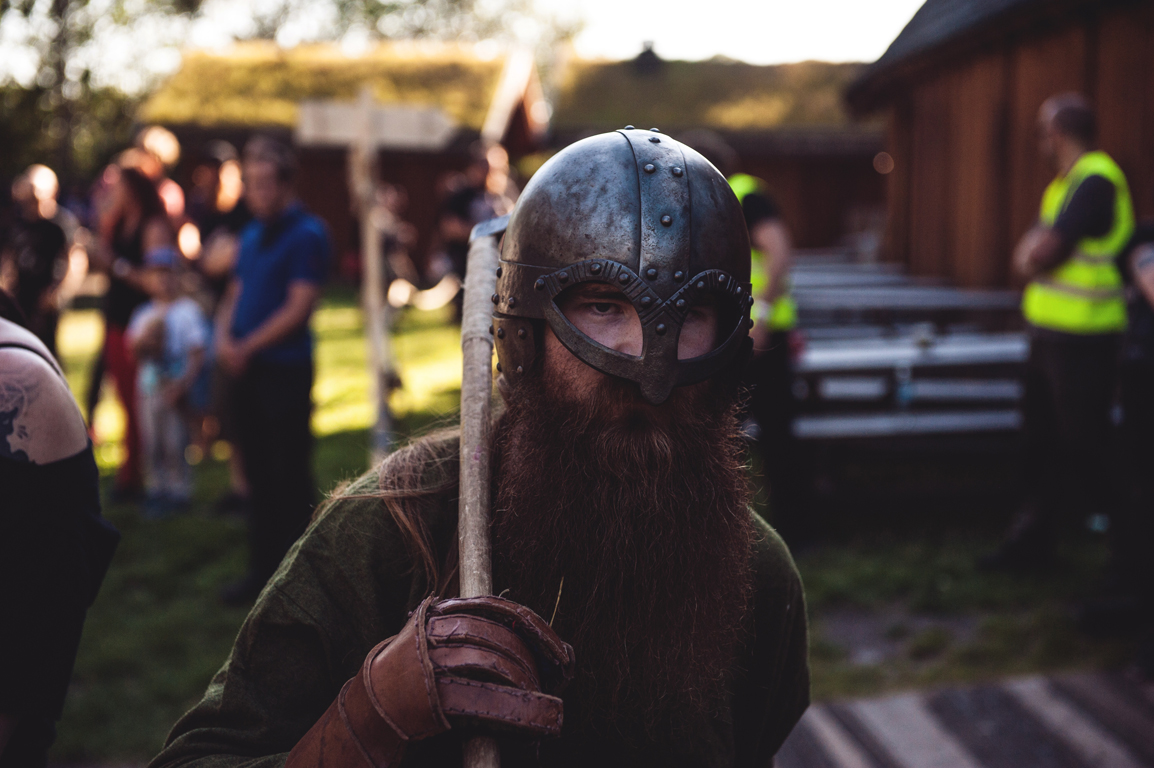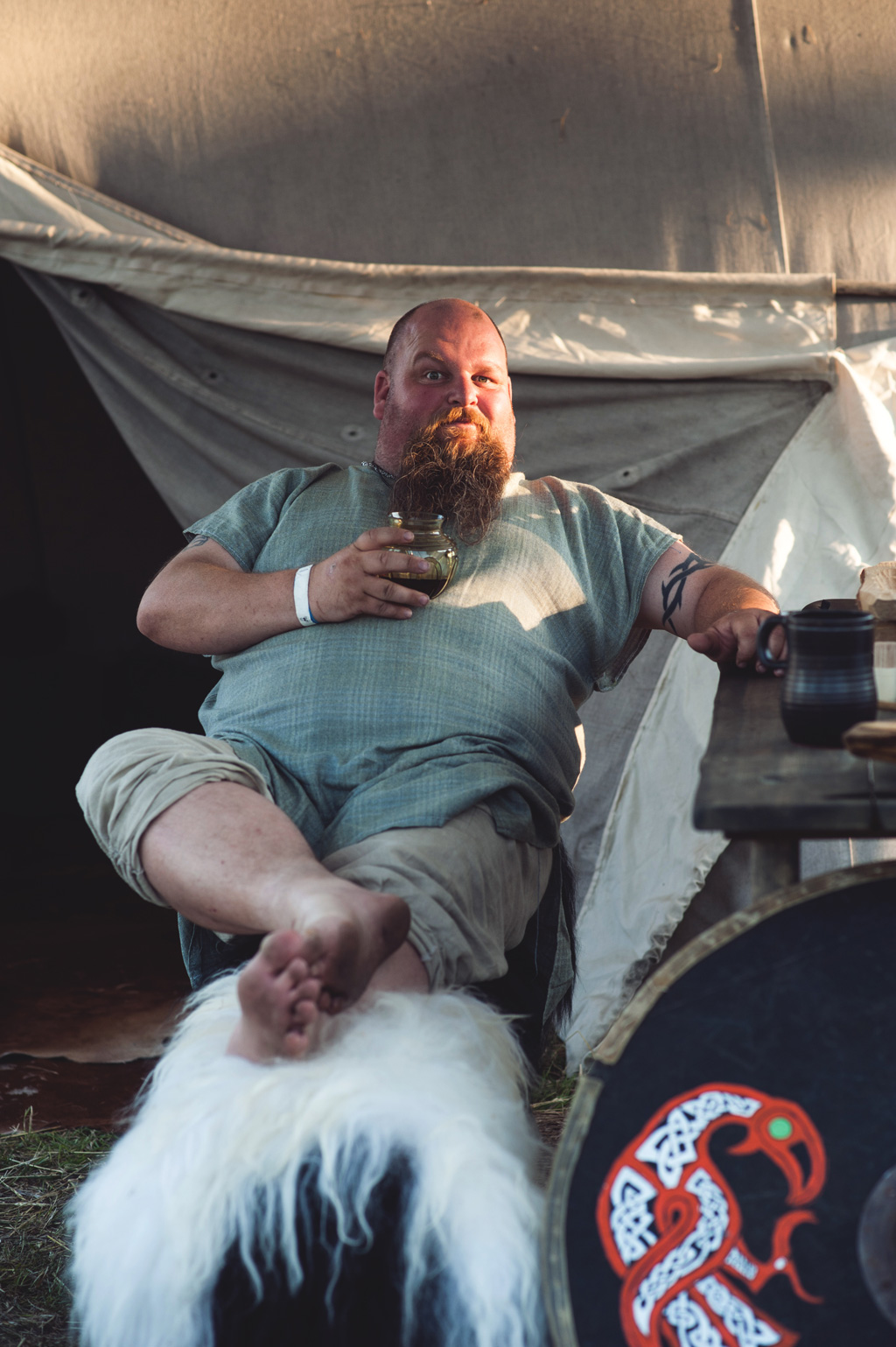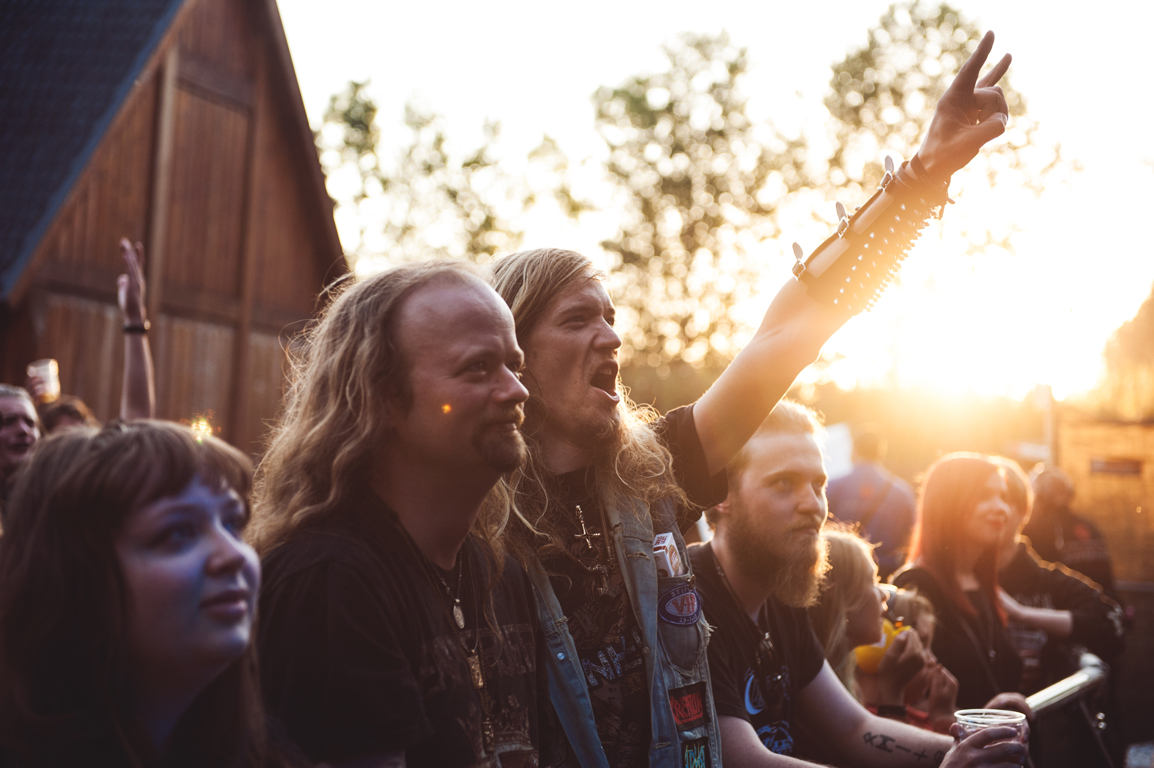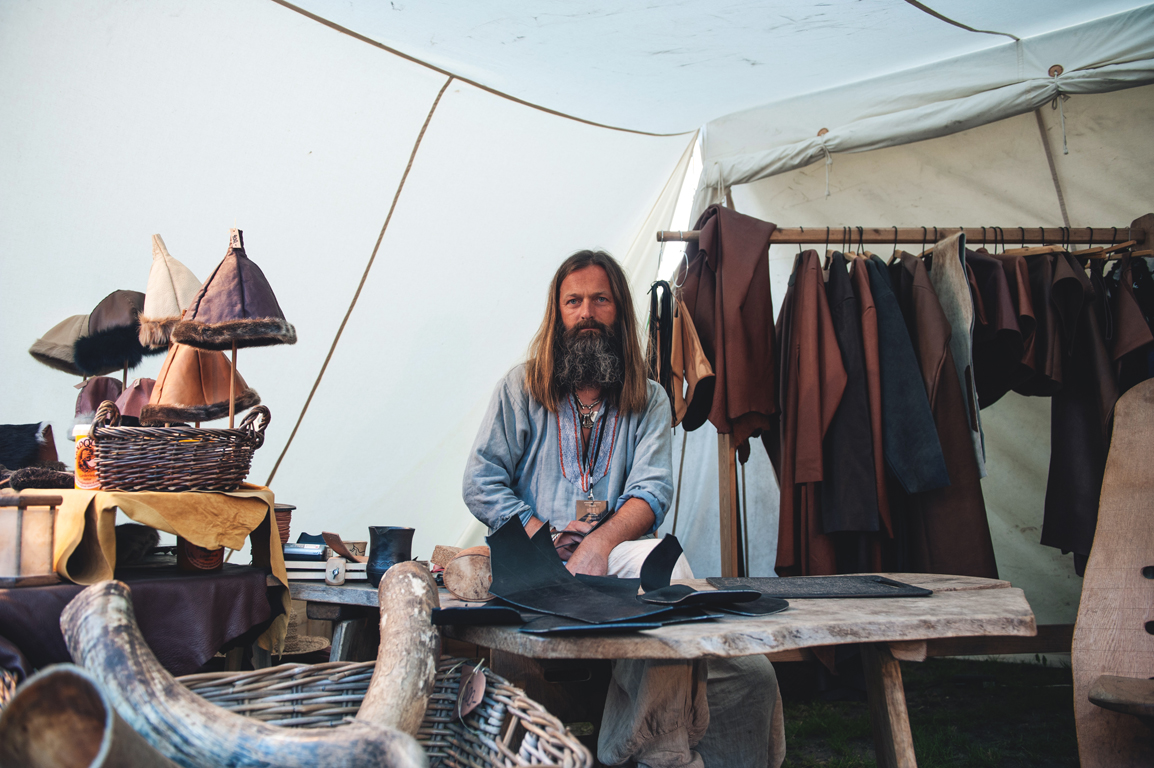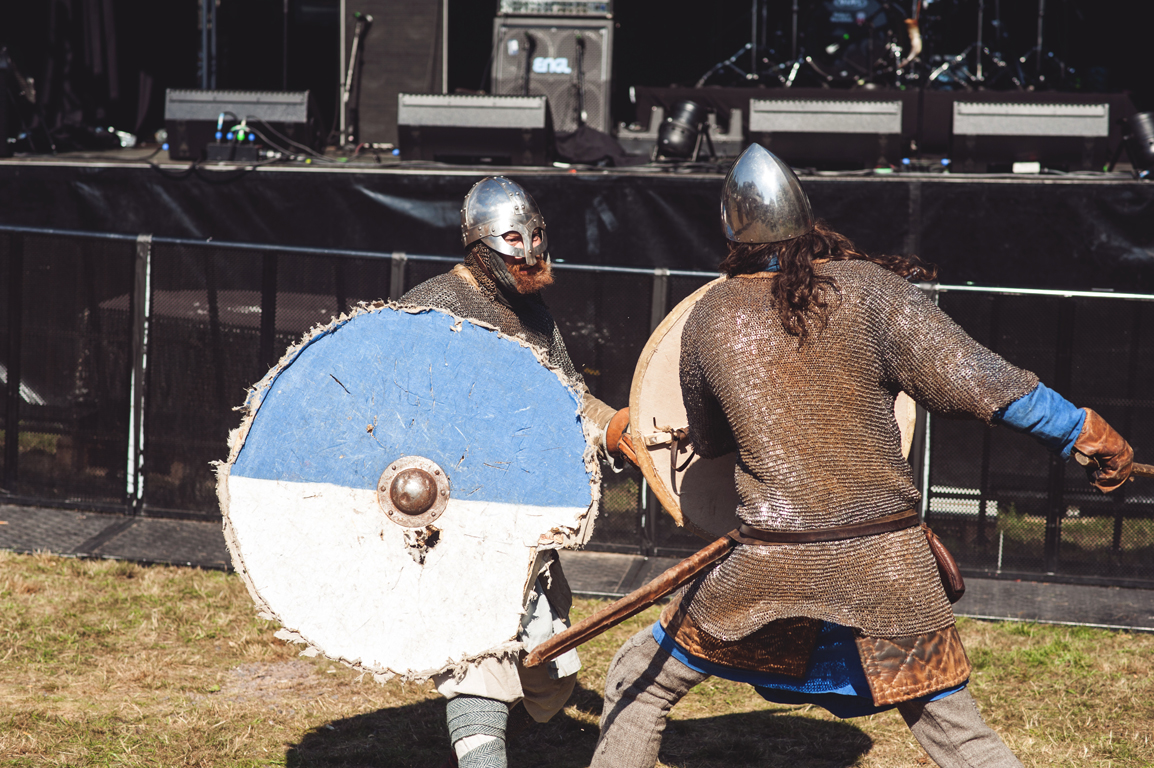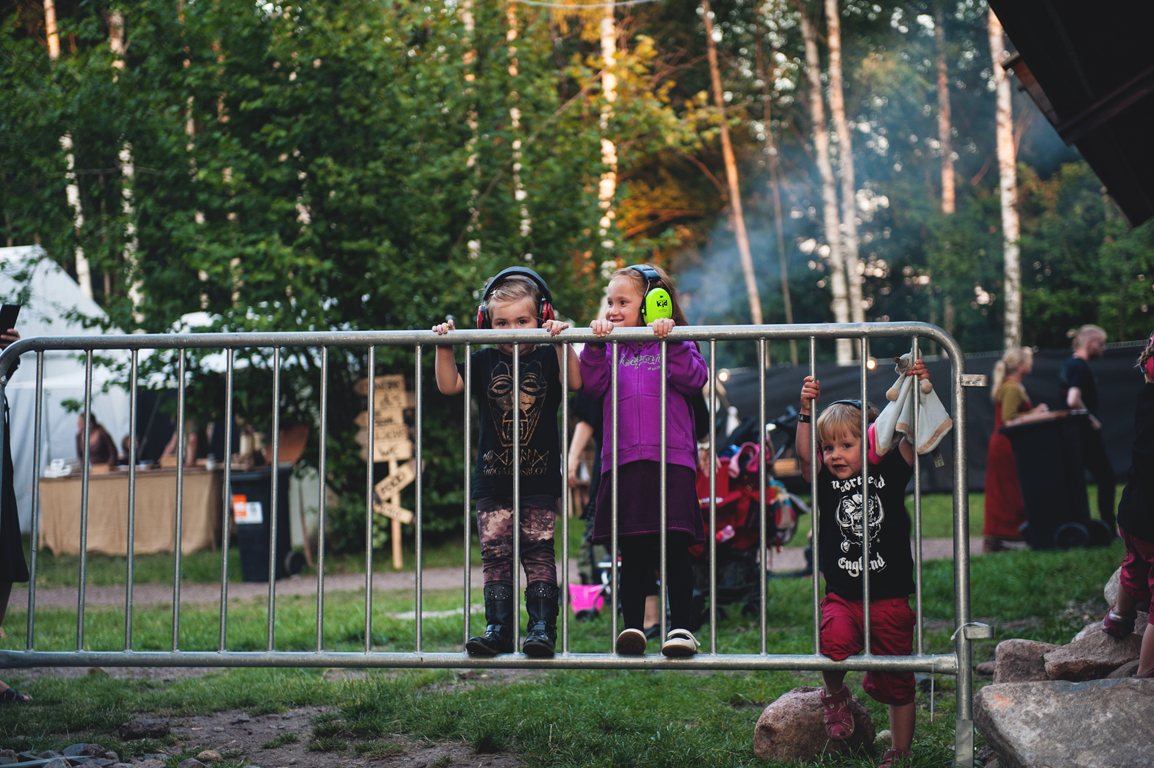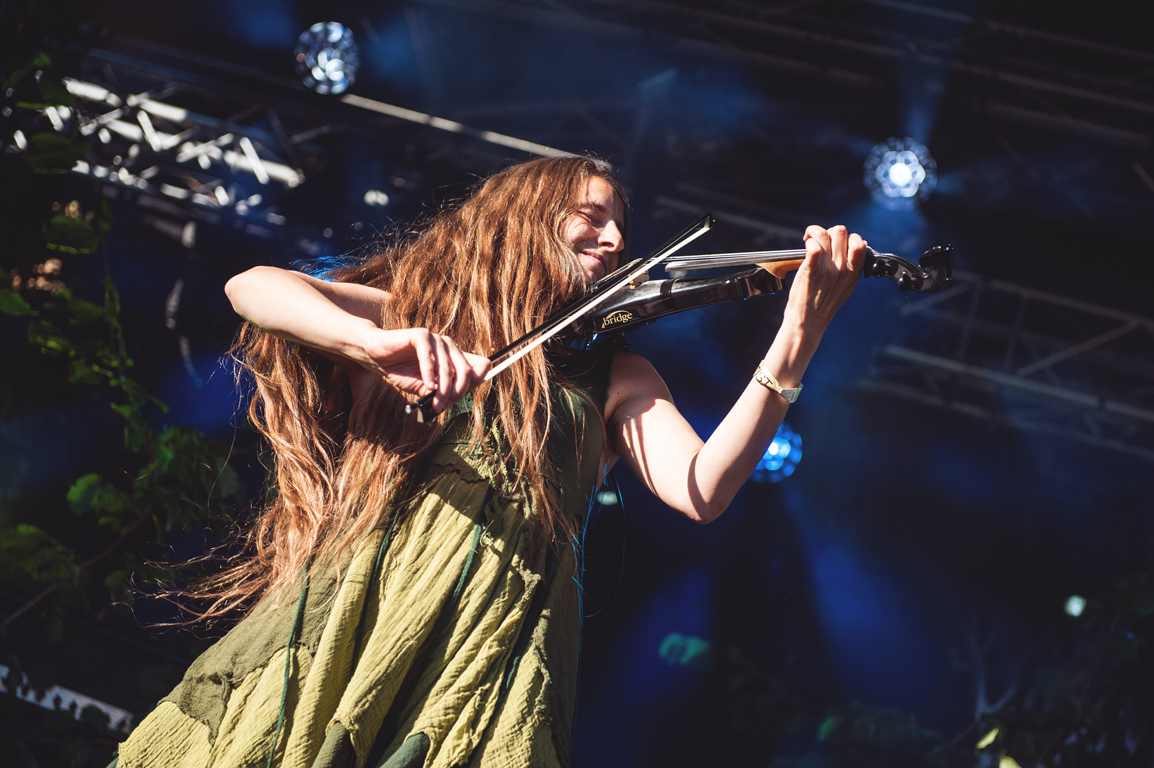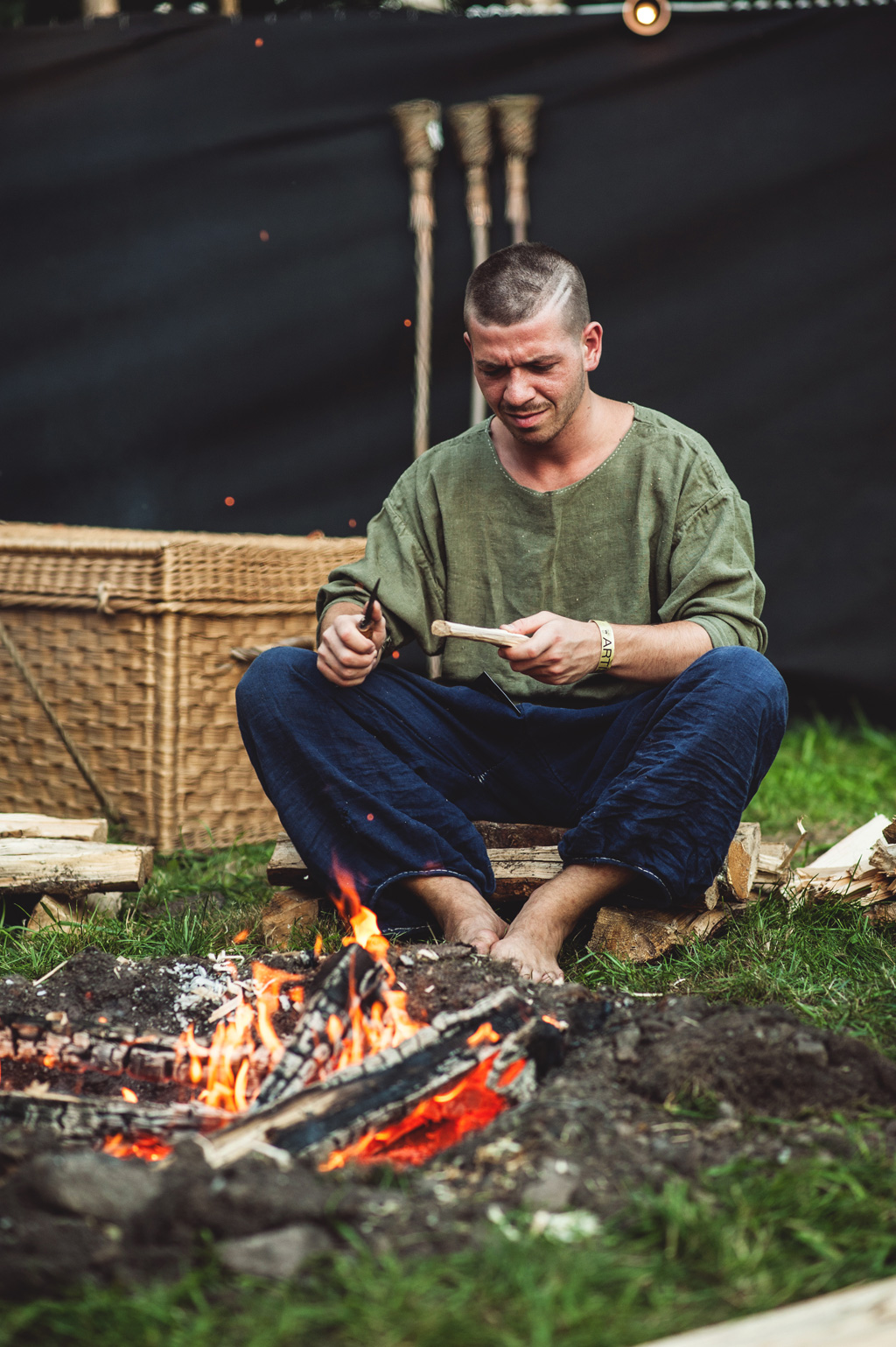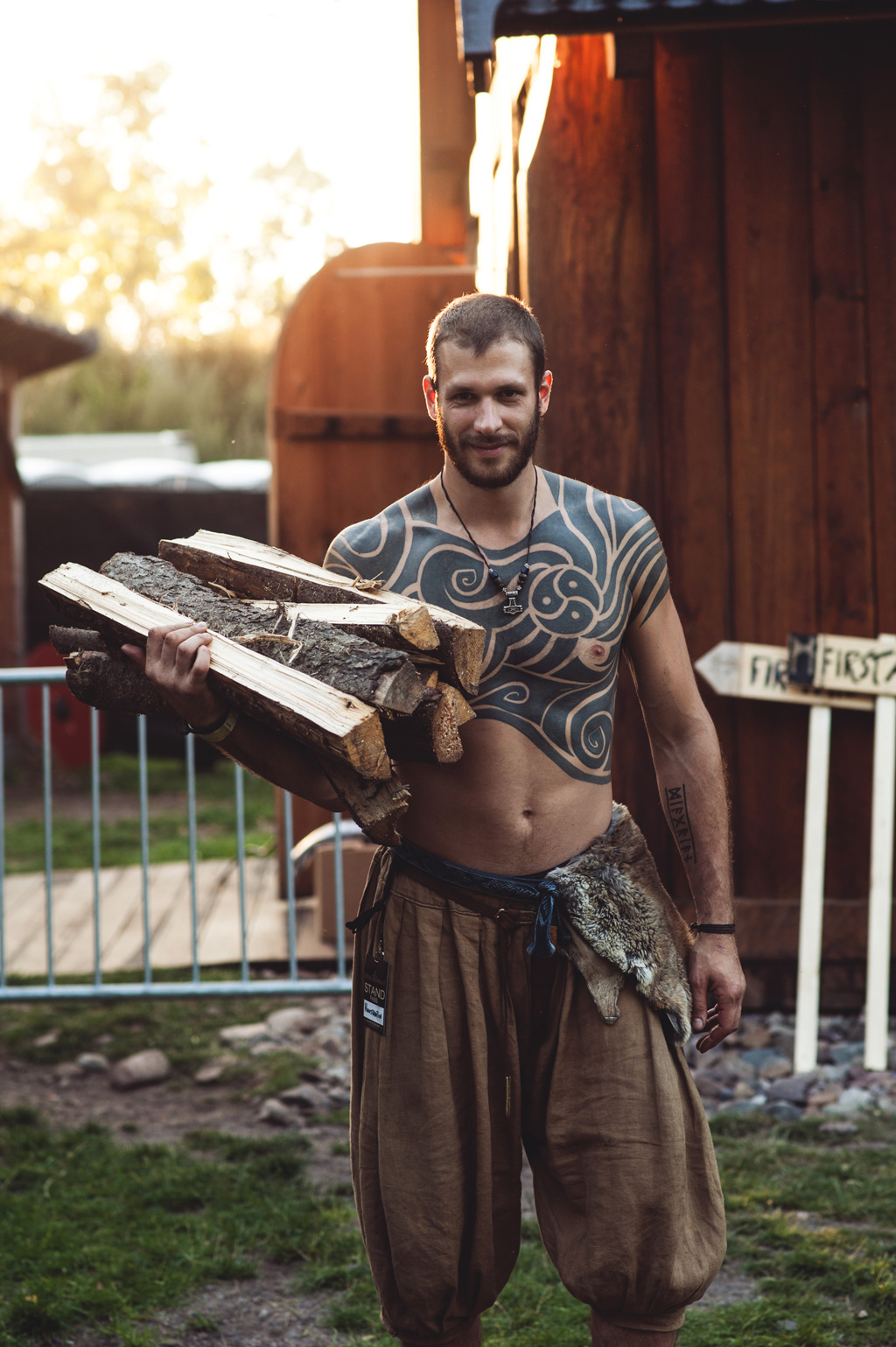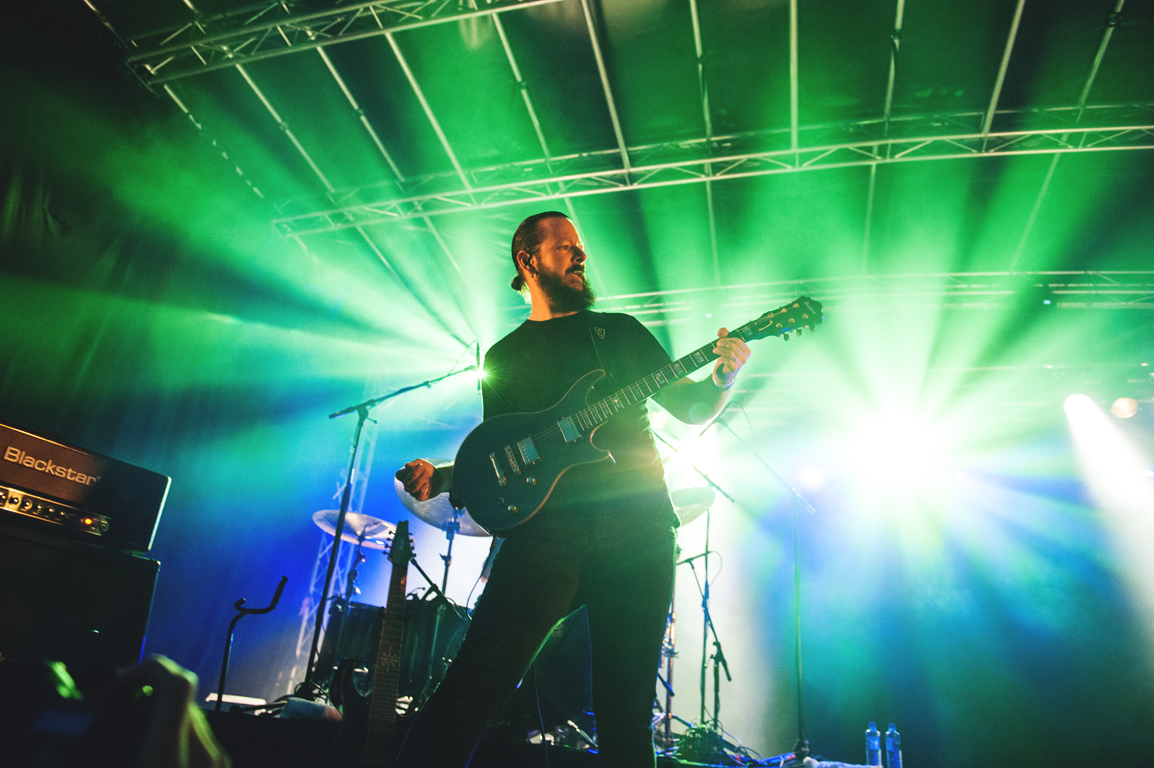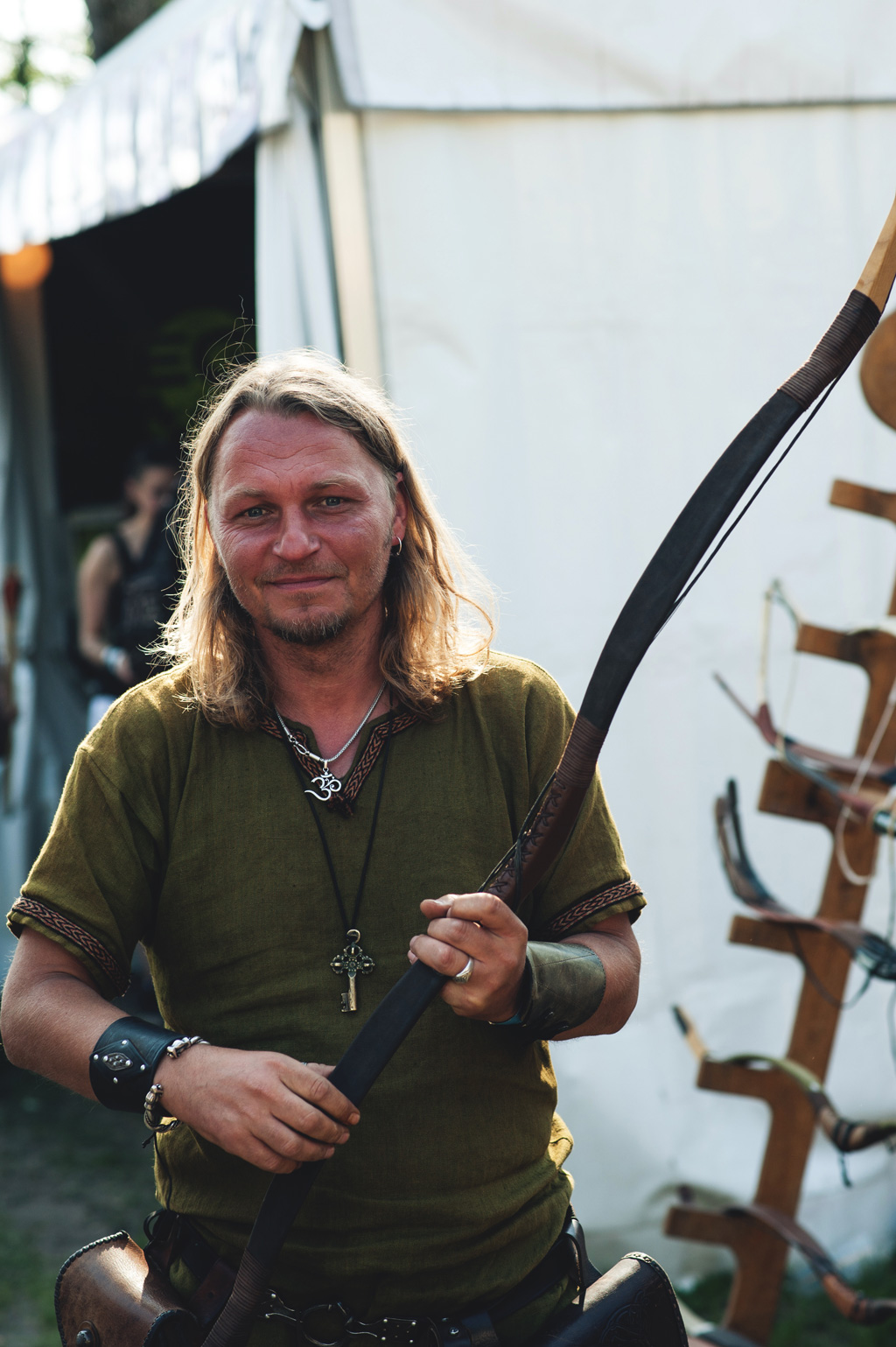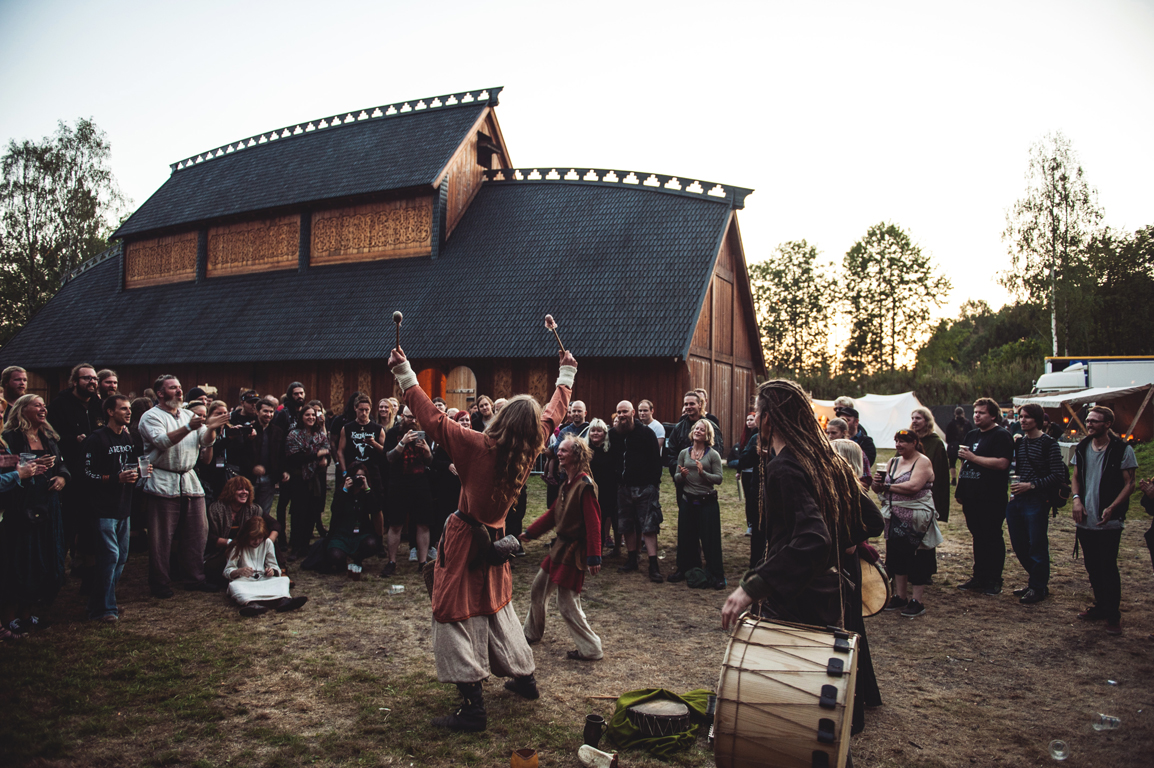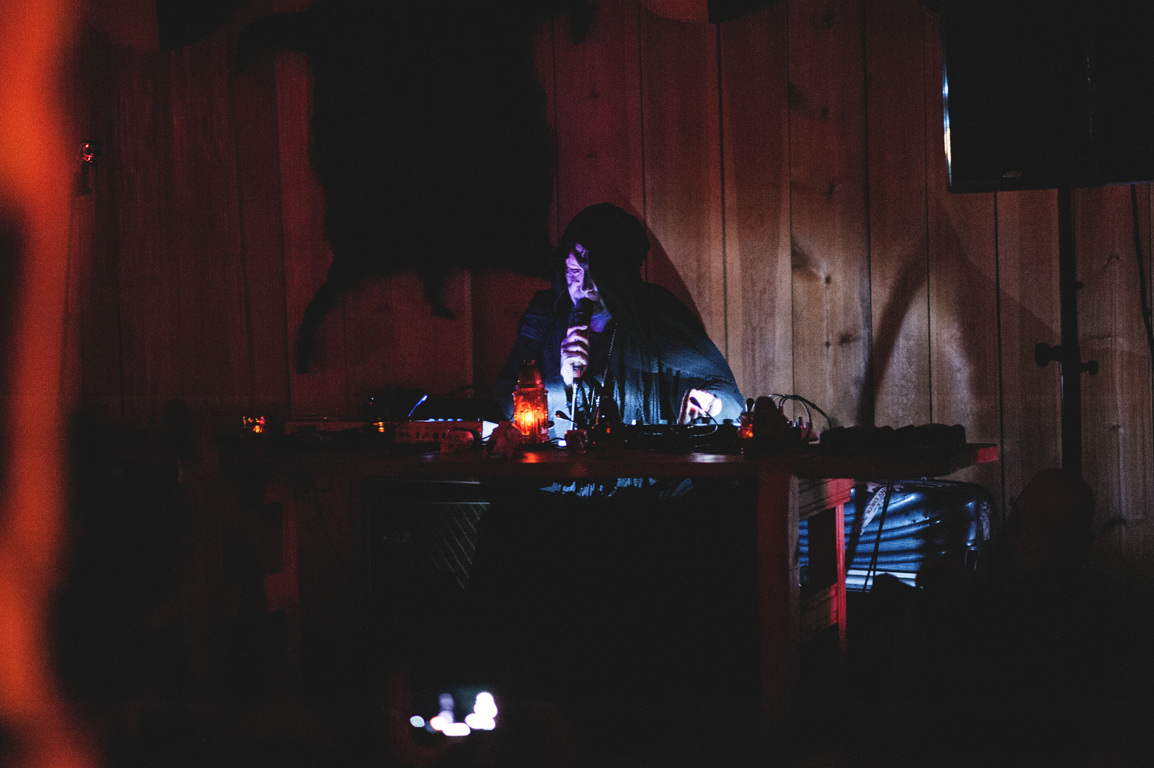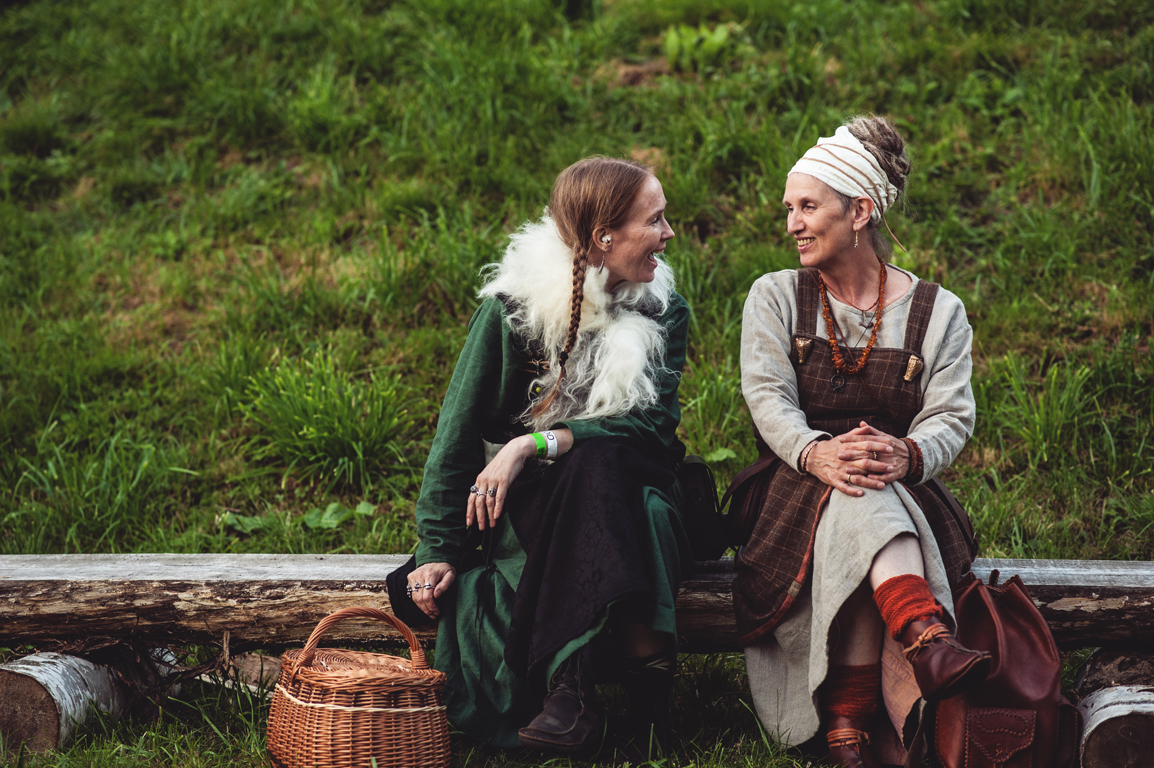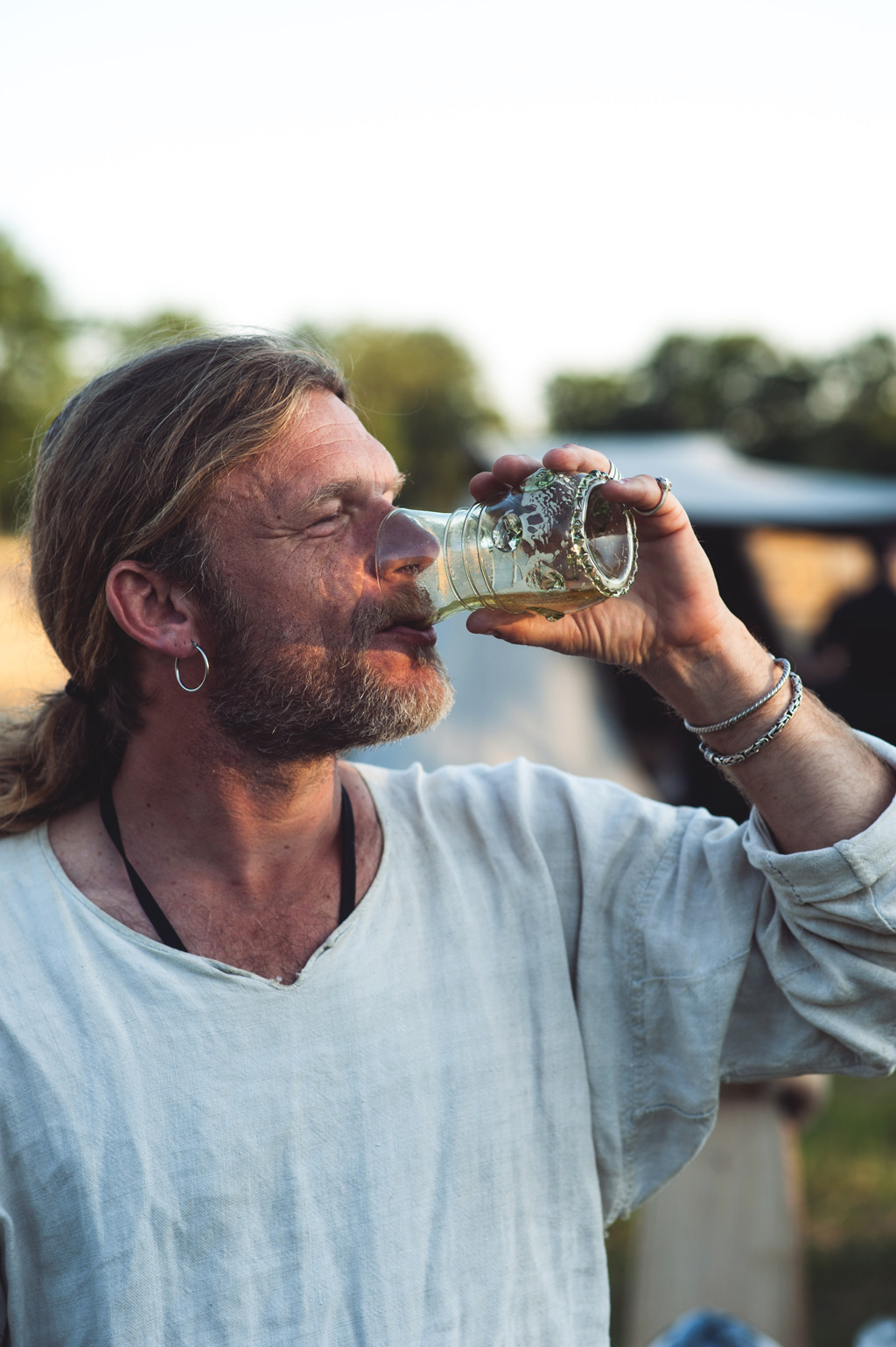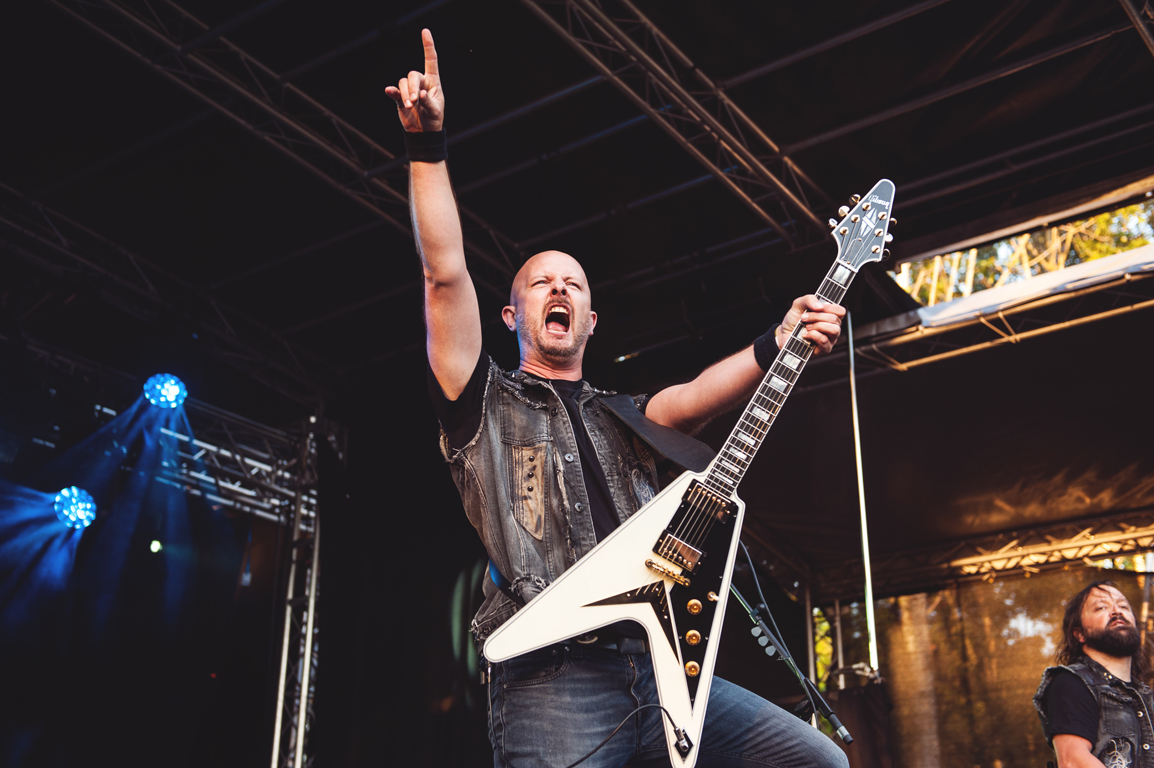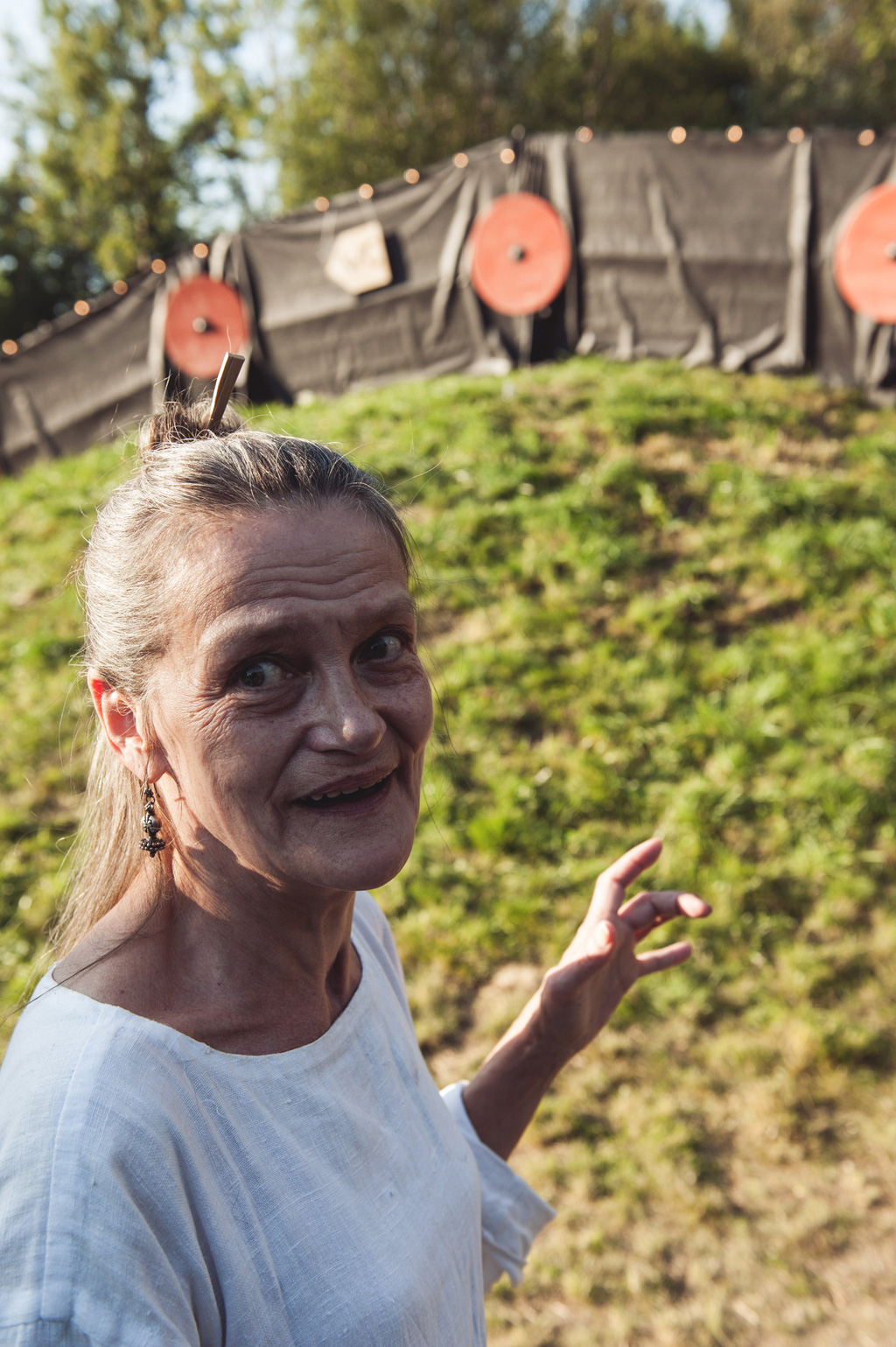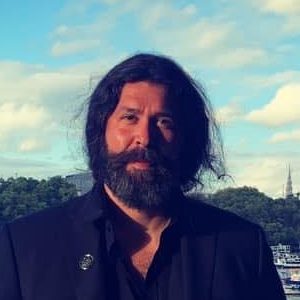On the heavily forested outskirts of the sleepy hamlet of Borre where the icy and blue waters of the Oslofjord lap at stoney shores there sit over 30 mounds of distinct historical significance. Covered in grass with only a local herd of goats to keep them company, these viking burial sites – swells in the land just distinct enough to be obviously manmade – have stood here for over a thousand years. With rare exception they have been respectfully, solemnly left alone – testament to the symbolic power they still seem to hold over this place.
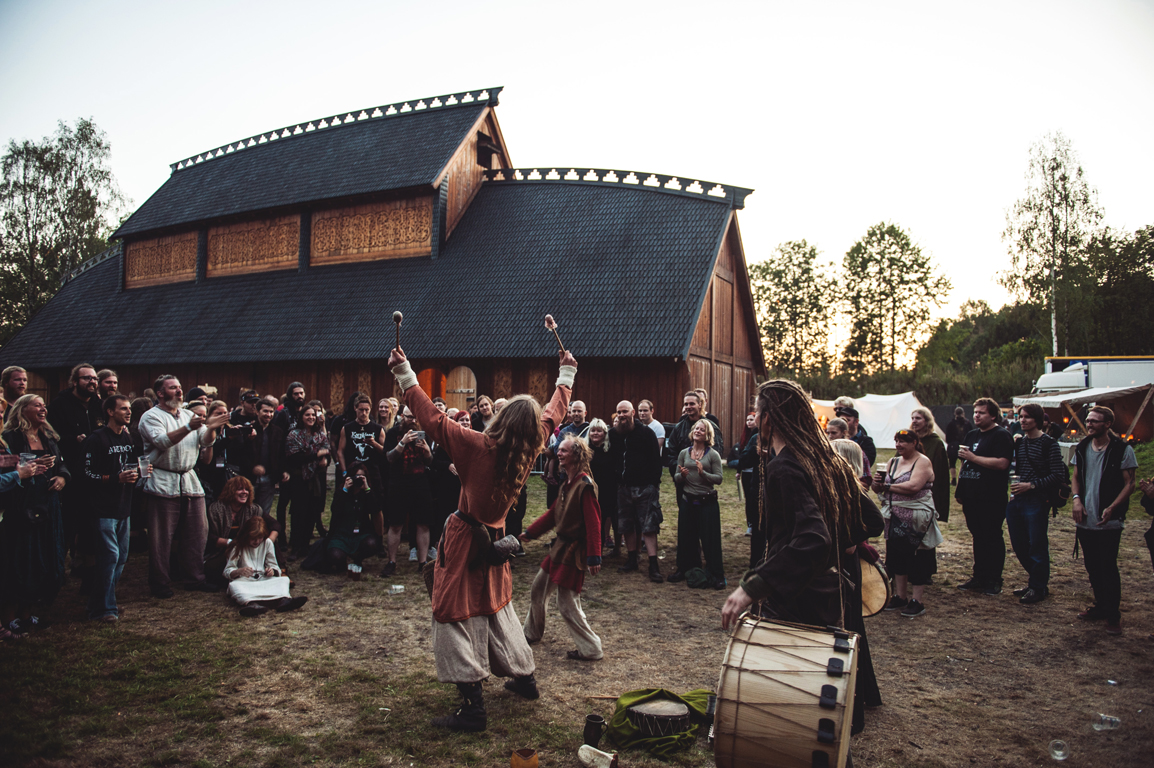
It’s hard not to to wonder whether the ancient royalty who buried their loved and unloved ones here could have ever guessed that just a few hundred yards away the imagery and iconography of Norse mythology would someday be the subject of such spirited, thoughtful debate and celebration.
It’s the first evening of Midgardsblot where history, folk music, black metal and a genuinely breathtaking setting have combined to create something with aspirations as lofty as the imaginations of the ancestors who’ve inspired it. Forget plastic, horned helmets and cheeseball stereotypes.
Metal and Viking culture combine for Norway's Midgardsblot festival
As we previewed last month (see above), this carefully curated heir to last year’s Eidsivablot festival is, as its organiser Runa Strindin explained, a collaborative effort intended to create something unique, progressive, and altogether new.
Right now Einar Selvik, founder of the Wardruna – an acoustic constellation of folk and world-music inspired by Nordic spiritualism and history – has taken the stage inside a reconstructed Viking great hall and it’s left the crowd spellbound. Truth be told it’s impossible resist the weightiness of this imposing, windowless setting – a three storey enclosure replete with shields and runic carvings with a central firepit and, crucially, a bar at the end where you can order a cup of mead if you’re so inclined. The real charm, though, is the stories in between.
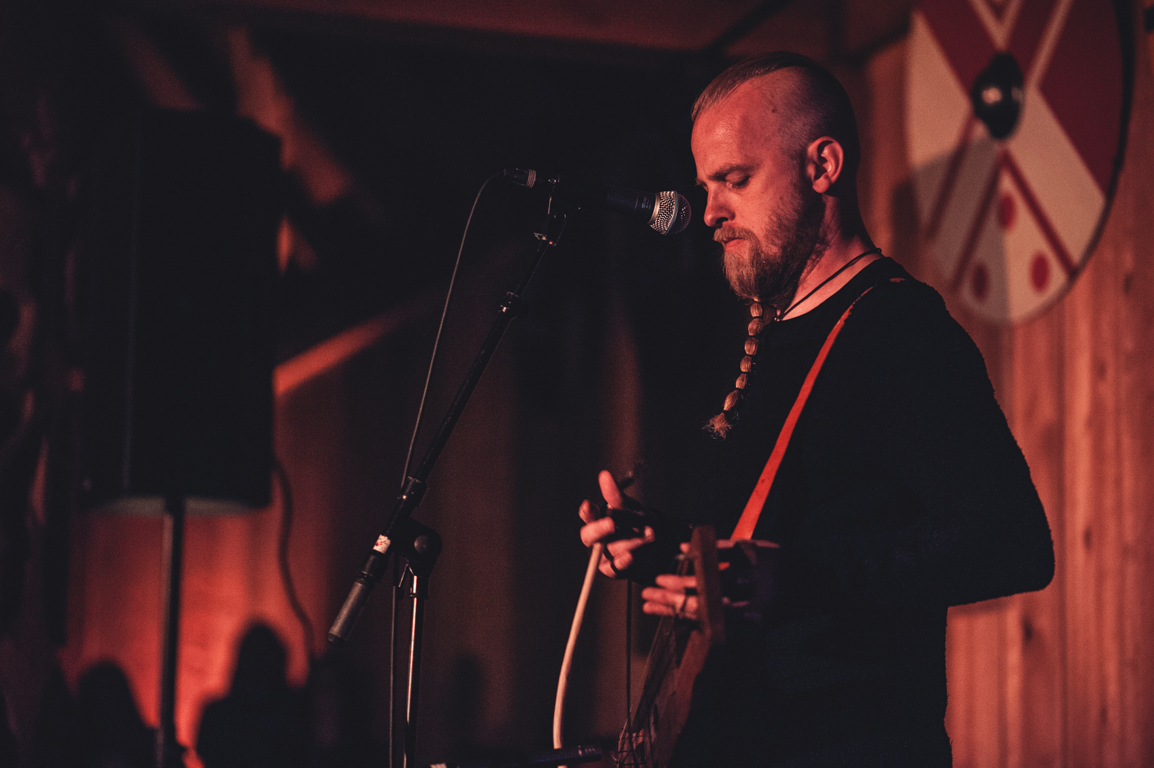
“People. especially in the rock and metal world seem to confuse ragnarok with armageddon,” he says. “Ragnarock isn’t about death, it’s also about rebirth. As one thing finishes, another begins.”
It’s an interesting concept and one that you might apply to the themes underpinning the festival itself. Midgardsblot isn’t just a new concept for a festival. It also seems very much a response to older ones.
“Now this is a song that I wrote about Thorir Hund,” says Einar. It sparks a loud cheer from the some crowd before he laments the chieftain’s excision from school textbooks. Later on, under a starry sky, he’ll explain how the highest honour to be achieved in Norway is the Order of St. Olav, a medal inspired by the historic figure who’s widely perceived as the ruler who brought Christianity to Norway. Thorir Hund? Well – he’s the chieftain who lead a peasant uprising and brought about Olav’s demise.

It’s emblematic of Norway’s uneasy relationship with its past – a history misappropriated by many over the years to the extent that its very acknowledgement is seen as transgressive in some quarters here. It’s that underlying tension which gave rise to the black metal scene so many years ago, but where for many years the effects and unintended consequences of this most mythologised of scene’s politics and internal strife have been left to outsiders to detangle, what makes this weekend’s gathering so unique is that part of the programme includes some vital self-reflection.
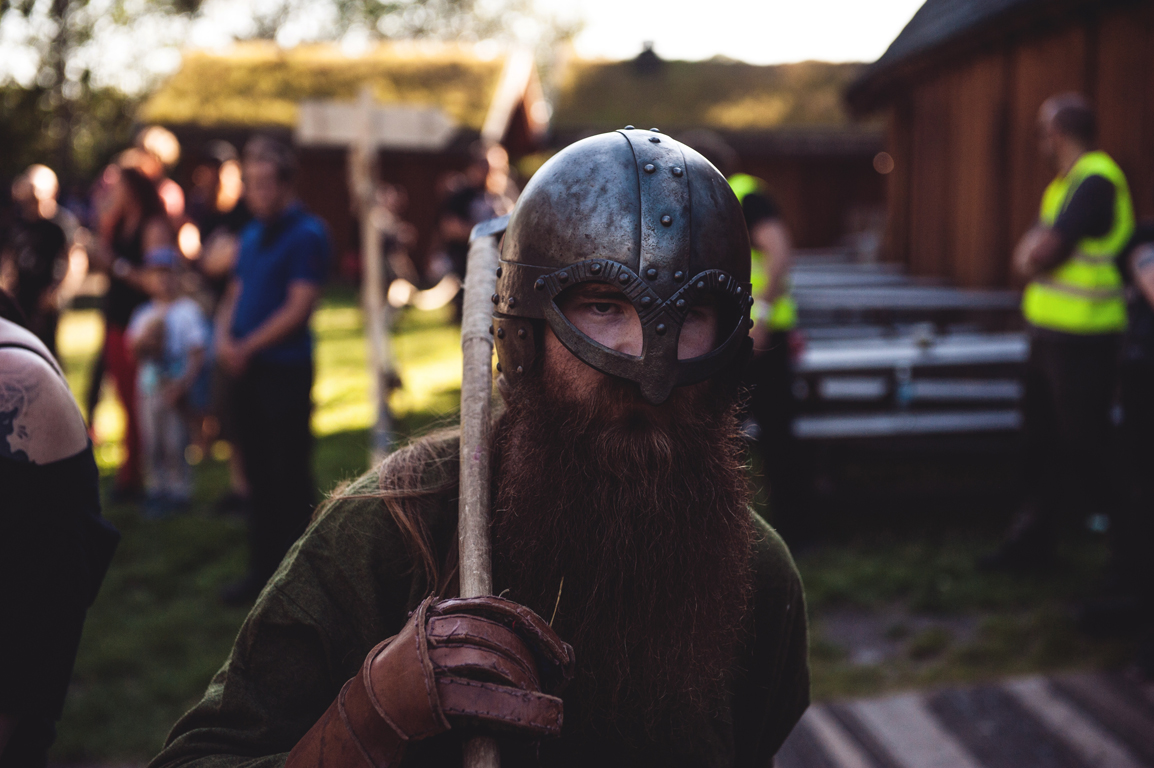
It’s the next day, and inside the Midgard Historical Center, filmmaker Christian Falch is screening clips from his upcoming Black Hearts documentary, which – more than an account of black metal in 2015, is an exploration of its problems and unexpected consequences. One of them, beautifully, is From The Vastland – the world’s first and only Iranian black metal band. Its founding frontman Sina’s courageous stand against an intolerant government and in the face of jail-time and death-threats isn’t just inspiring, but indicative of how much potency this vibrant world still has. Contrasted with interviews with Kaiadas of Greece’s Naer Maton, who is also a member of the Greek parliament representing the right wing, nationalist Golden Dawn party, it’s potent stuff, and indicative of just how it can go, for better, and for worse. There’s an ensuing panel discussion, attended by Ivar from Enslaved and Cornelius from Solefald and conducted by the original singer of Turbonegro Harald Fossberg, who’s now a journalist for Norway’s national newspaper Aftenposten. It’s a good natured but serious discussion bordering on the academic, and indicative of the level of self-awareness present this weekend. Juxtaposed against the romantic, fanciful visions of viking heritage all fans of heavy music are no doubt familiar with it’s jarring, refreshing stuff to see it all so masterfully dissected, and it says everything of just how much thought has gone into the weekend. There are other indications, too.
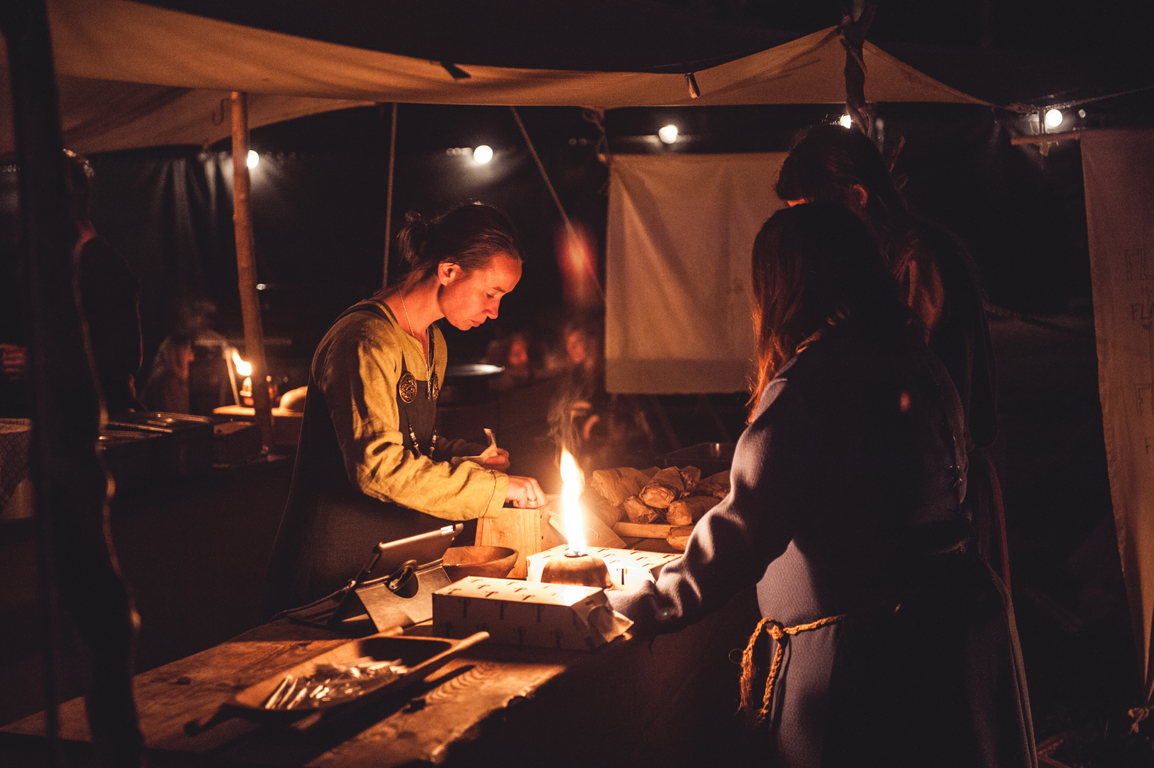
A bit later and under blazing sun Myrkur, perhaps one of the most hotly-contested artists in extreme music right now perform for the second time ever. It’s elegant, mournful, and – as a powerful middle-finger to the sometimes confining conventions of a genre at times guilty of being stuck in the status quo – fucking brilliant.
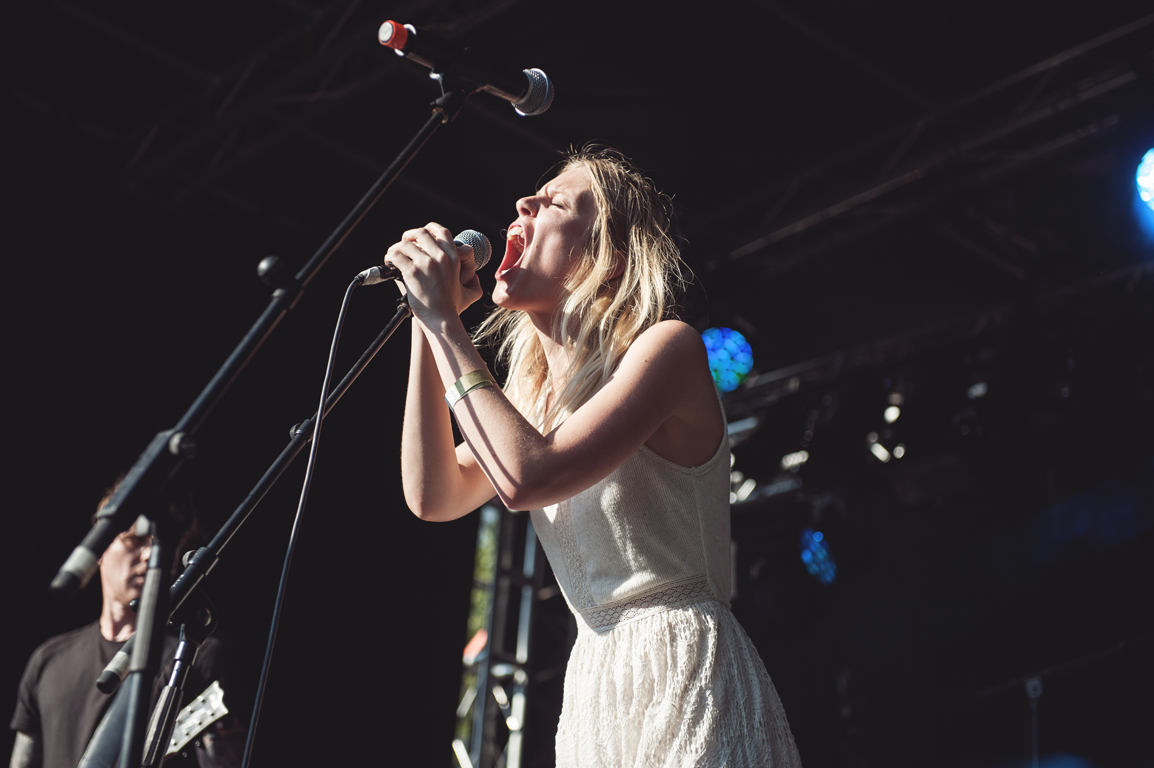
It only gets better later on when Ihsahn, perhaps one of black metal’s most prolific and inspiring figureheads shows just why he’s so frequently referred to as a genius – it’s a performance that’s nothing less than euphoric. Fittingly, Ivar from Enslaved’s Bardspec project – experimental, progressive electronica – rounds out the evening back in the great hall. As a contrast to last night’s conjuring of the old ways, it’s challenging, beautiful, at times confounding, and – for a scene and a community of musicians that have come full circle. In opposition to last night, it’s sweeping, progressive electronica set to the slow, hypnotic movements of a trapeze artist projected on the wall. Challenging? You bet, but then this isn’t your average gathering.
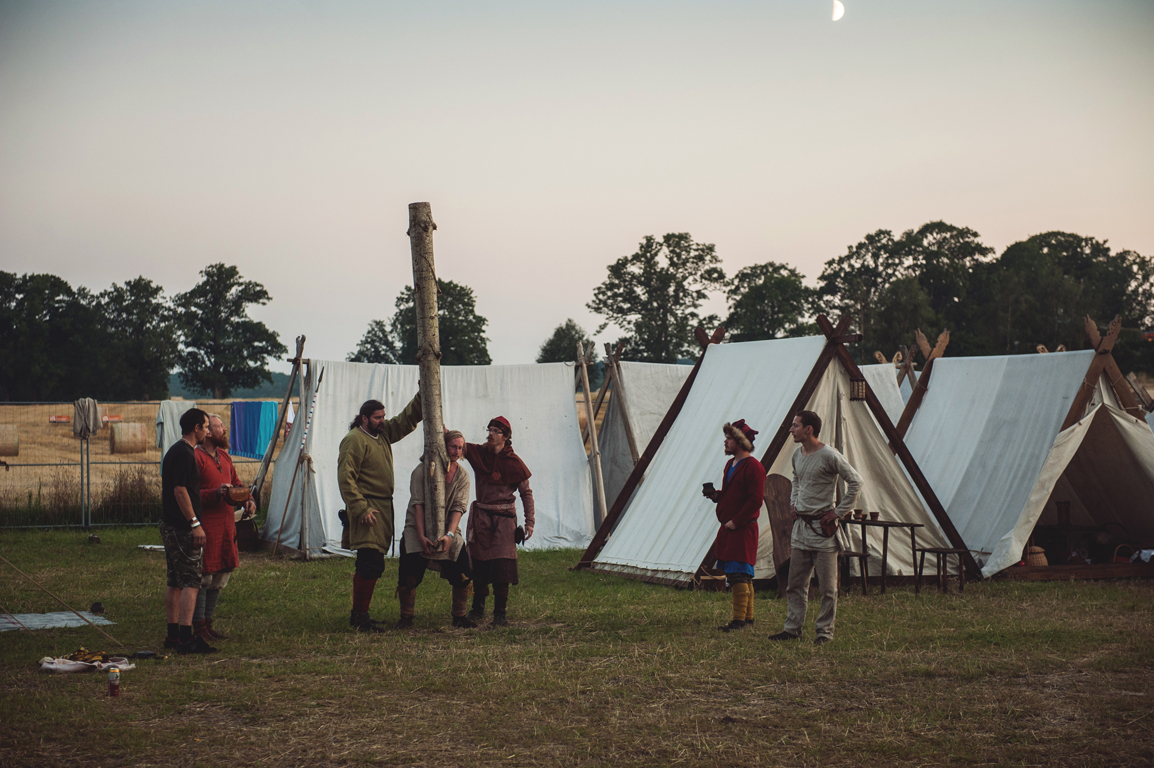
And so by day three the smiling crowd seems to have fallen into a comfortable pattern – you can stroll by the mounds in the blazing sun or go for a slightly icy dip in the water if you’re so inclined. You can visit the merch stalls – handmade jewellery and the odd longbow, mainly – or chat with a friendly local community of Viking reenactors who spend most weekends camped out in these parts – something like a living museum.
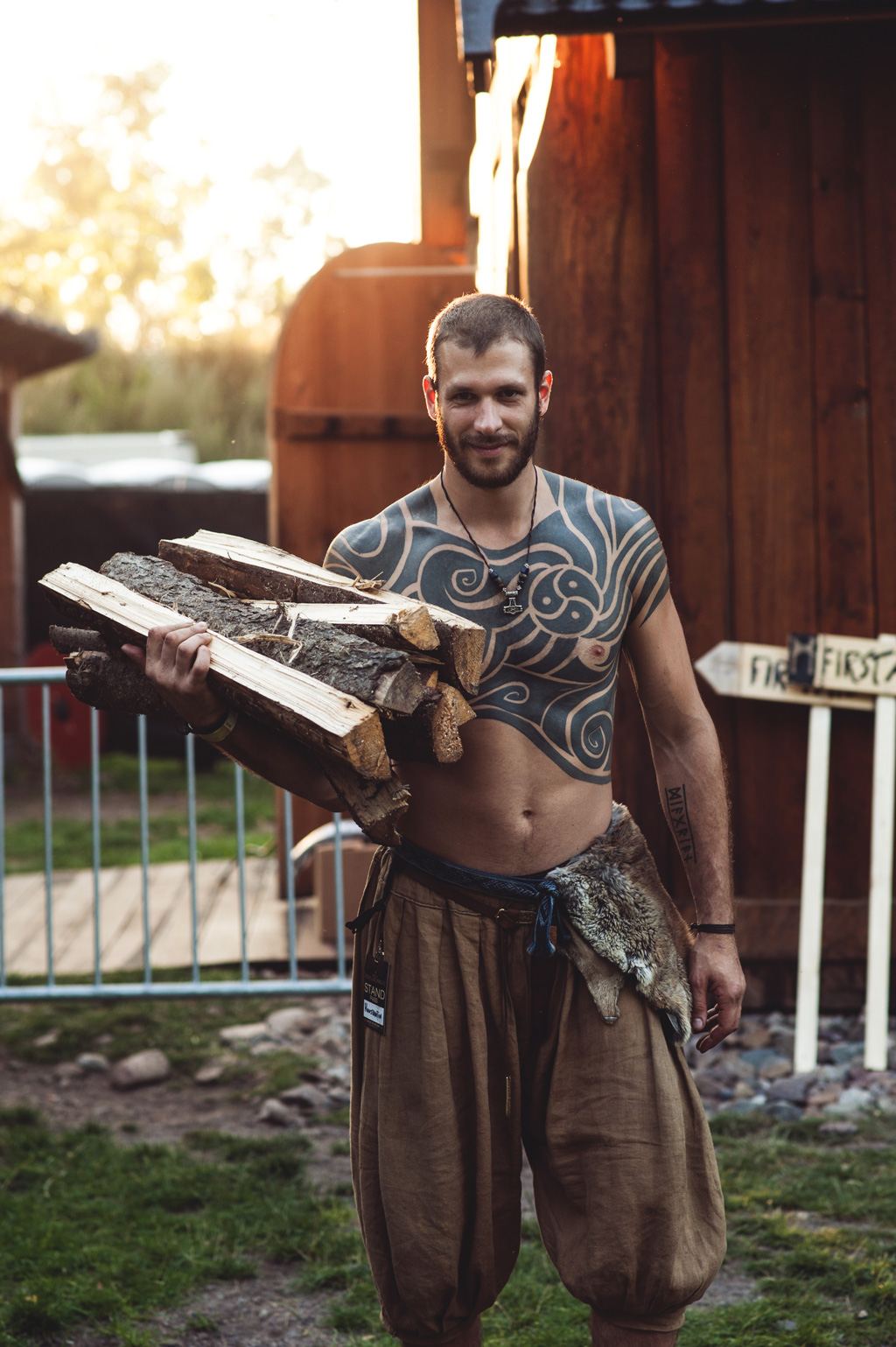
It’s really the small things though – Gustav, a local storyteller and his troupe of folk musicians, the Folket Bortafor Nordavind headed up by Benny – a virtuoso throat-singer, ambient composer and avowed Motörhead fan complete with leg tattoo – add a frequent charm to the weekend’s proceedings, and their animated recounting of old tales make you wonder why TV was ever invented in the first place.
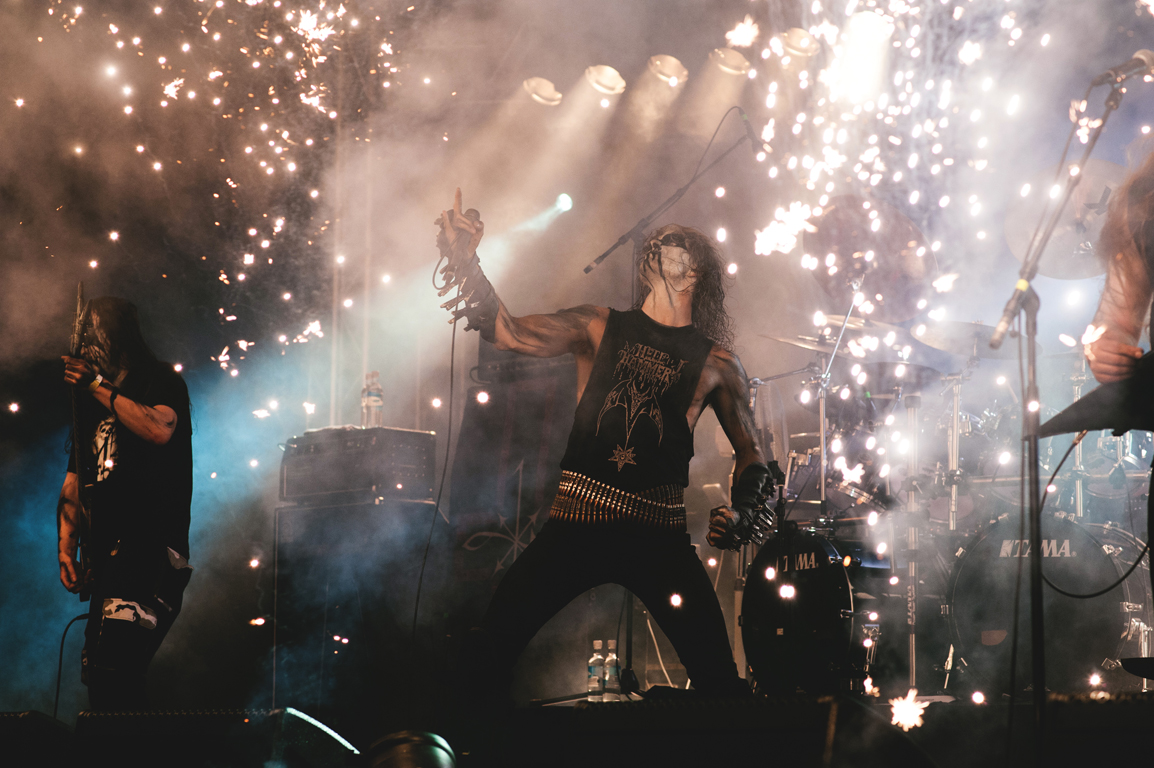
Tomorrow, 1349 will make a racket loud enough to wake the dead their pyrotechnics – a wickedly powerful, if somewhat traditional reminder of where this vibrant scene’s roots lie, and why festivals like Midgardsblot are the way forward. Later still, a large crowd reconvenes in the great hall for a Void Of Voices performance by Mayhem’s Attila Csihar. It’s part solo performance art piece, part haunting recital replete with industrial voice effects and, in the dimly lit windowless setting just the sort of thing to creep under your skin. It isn’t your average performance, nor is this your average festival – and long may it continue.
